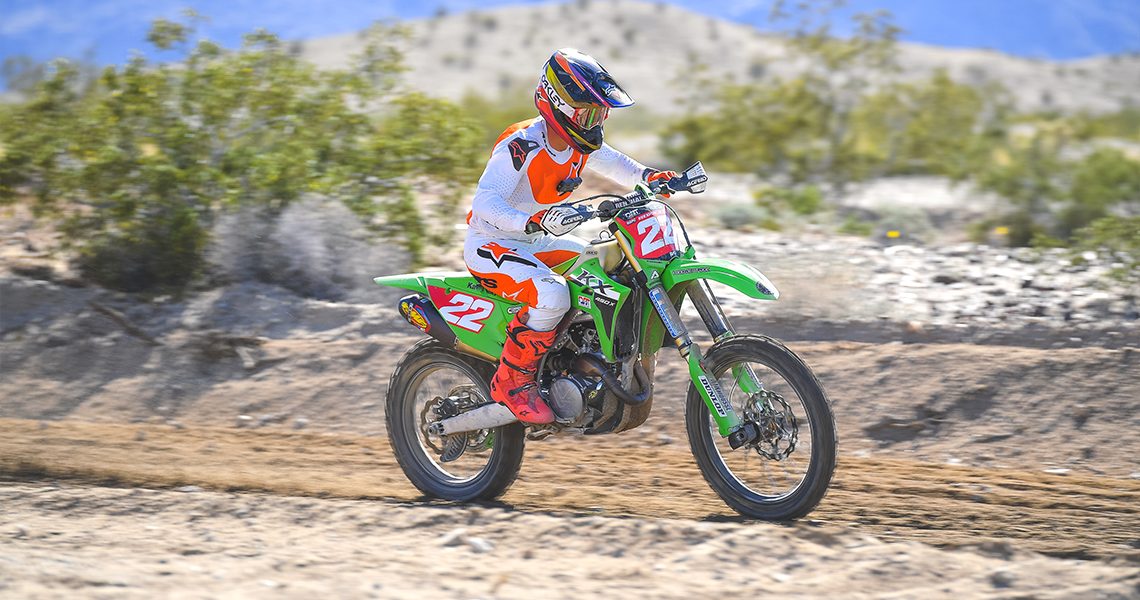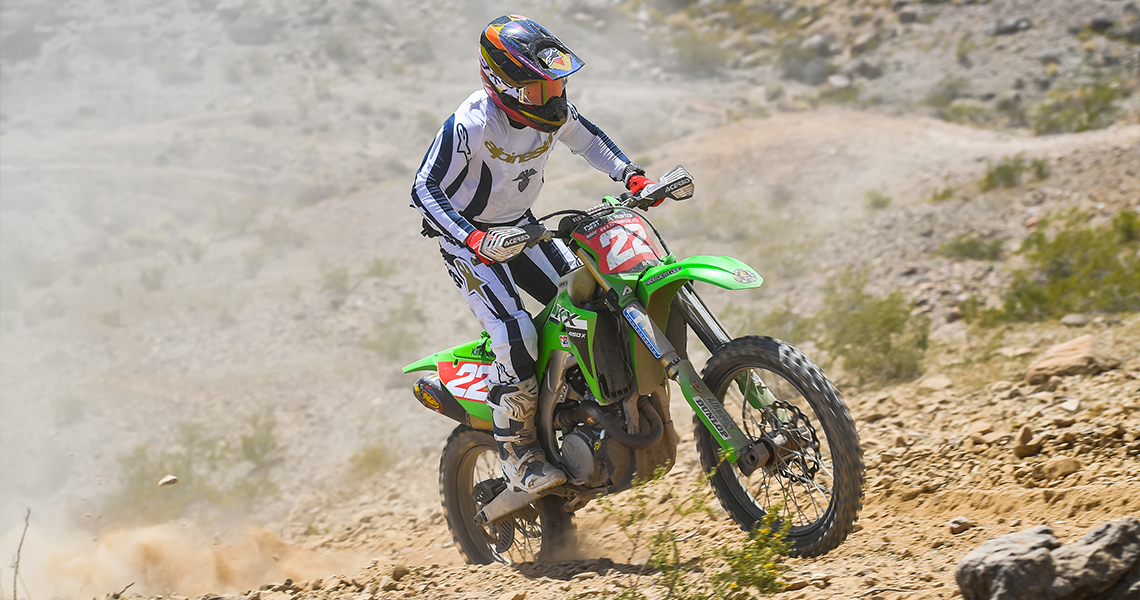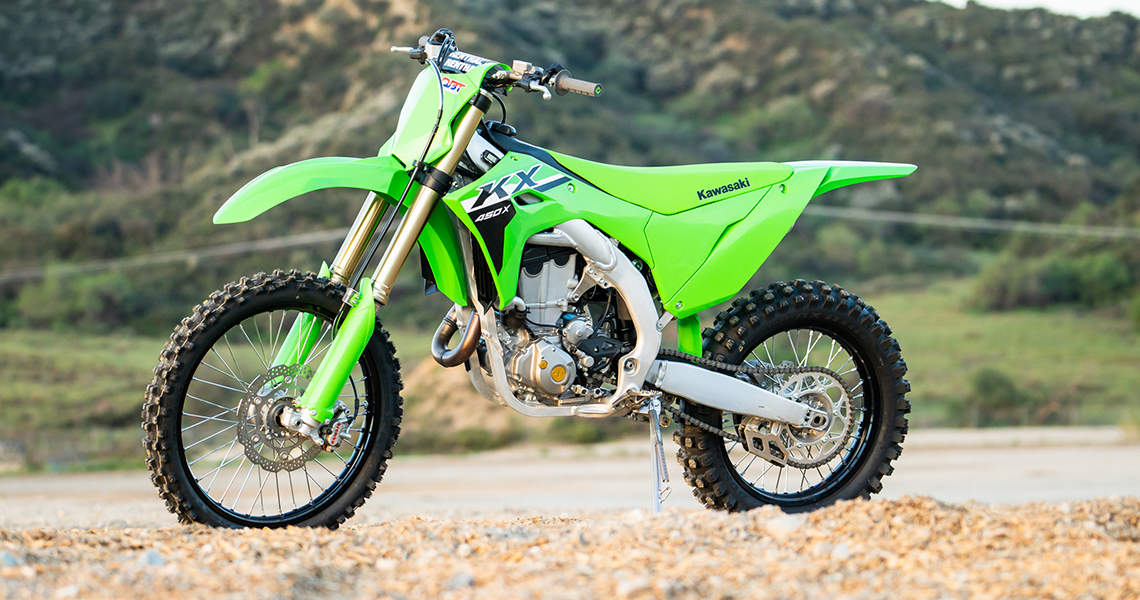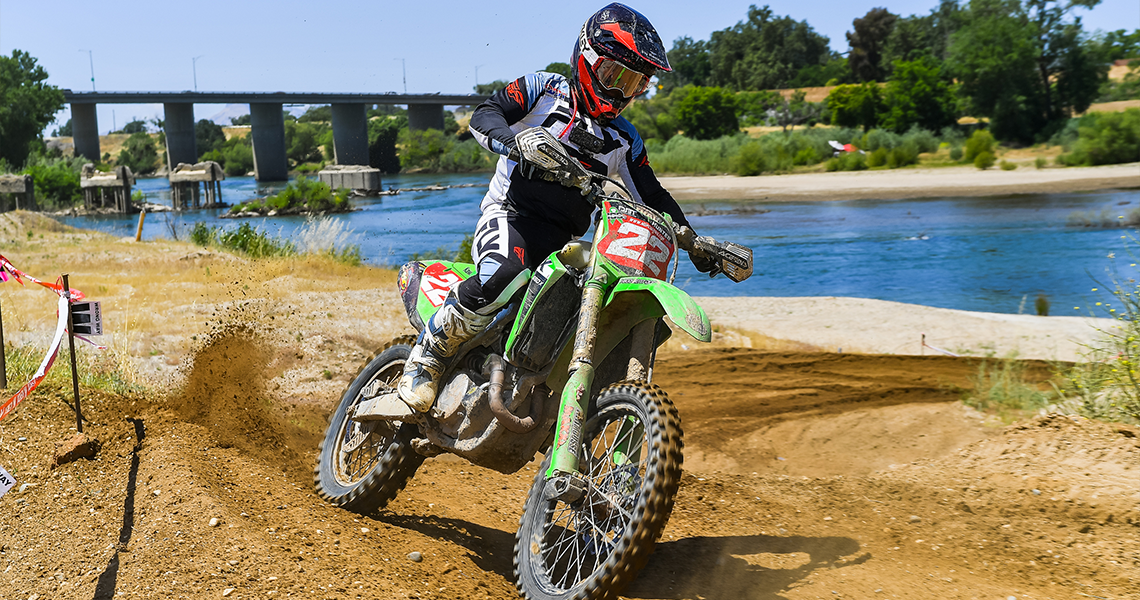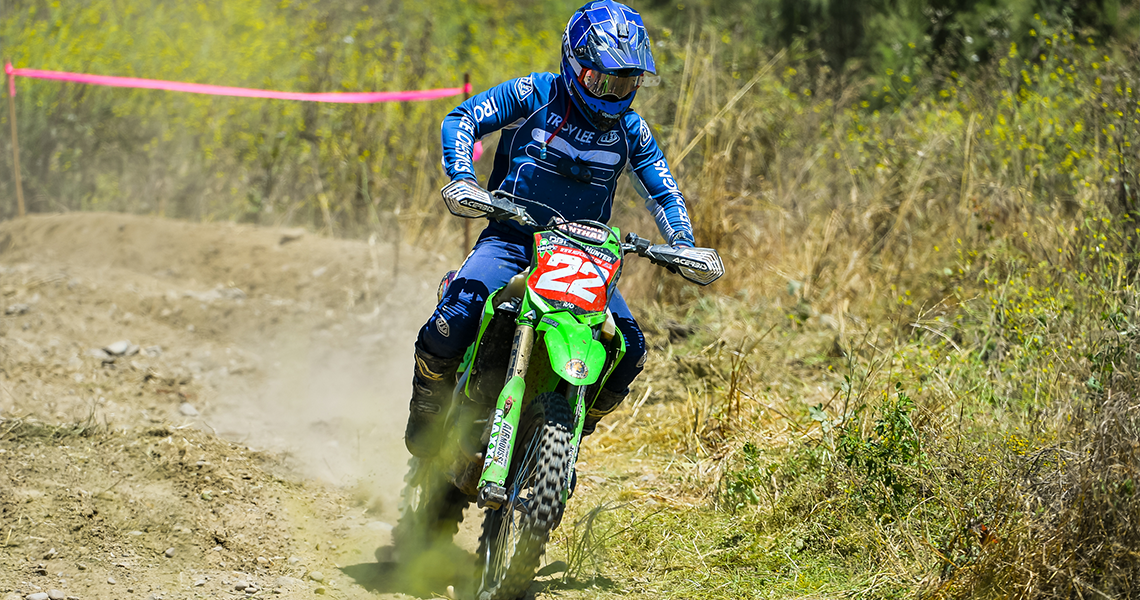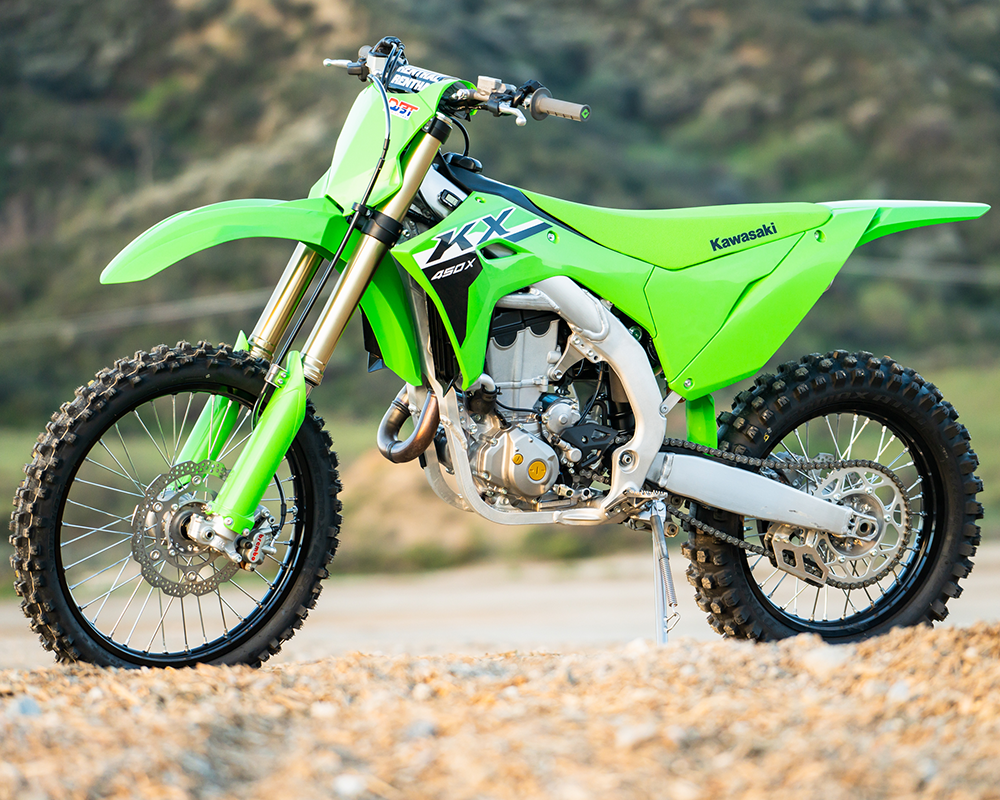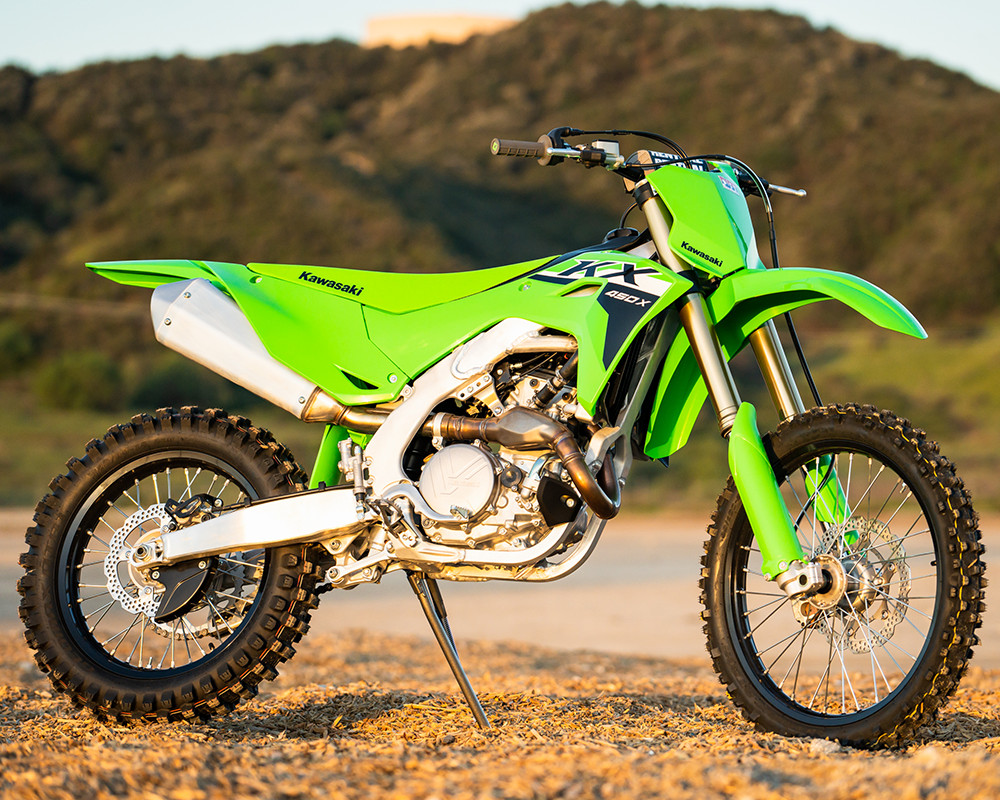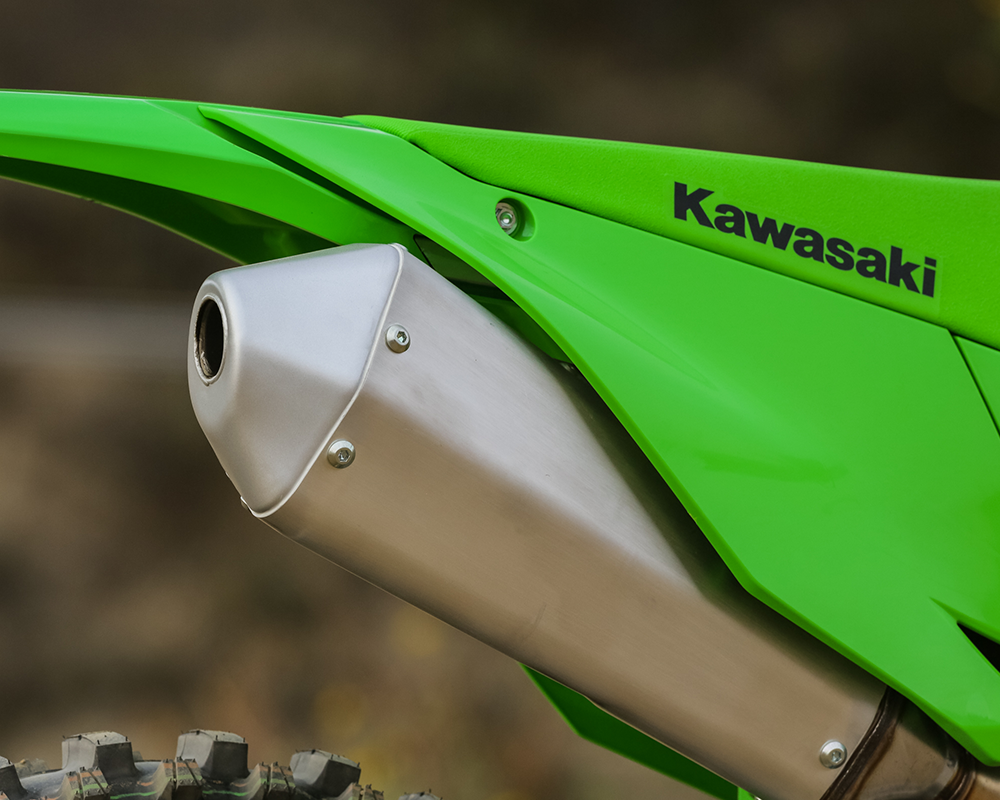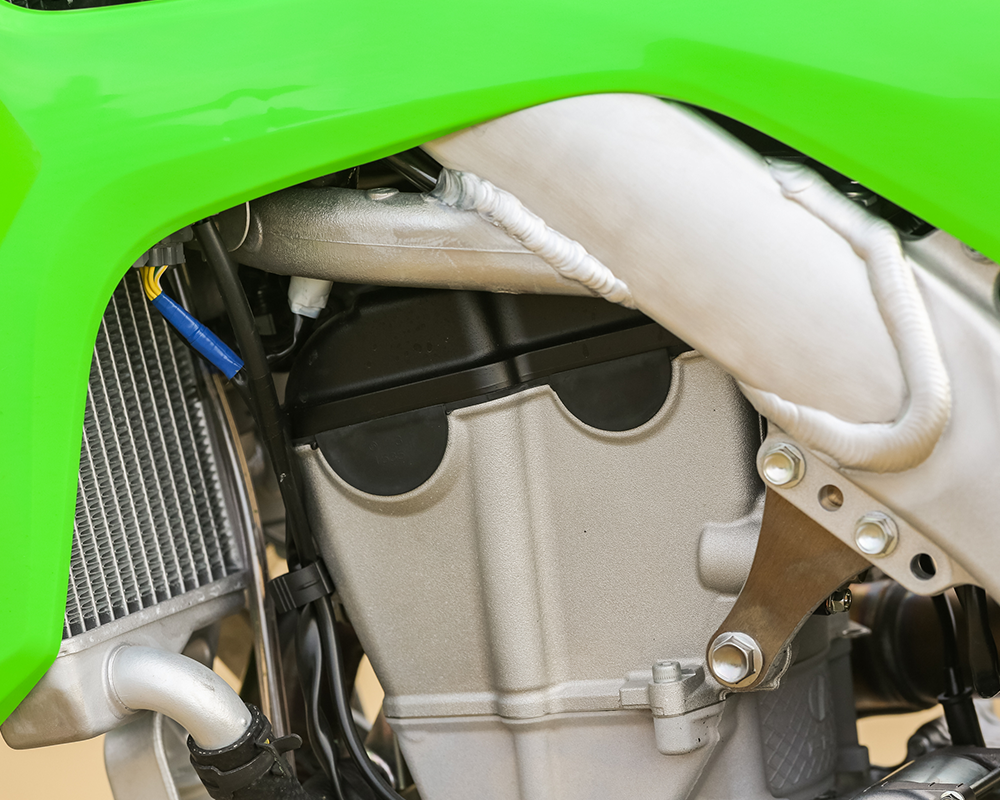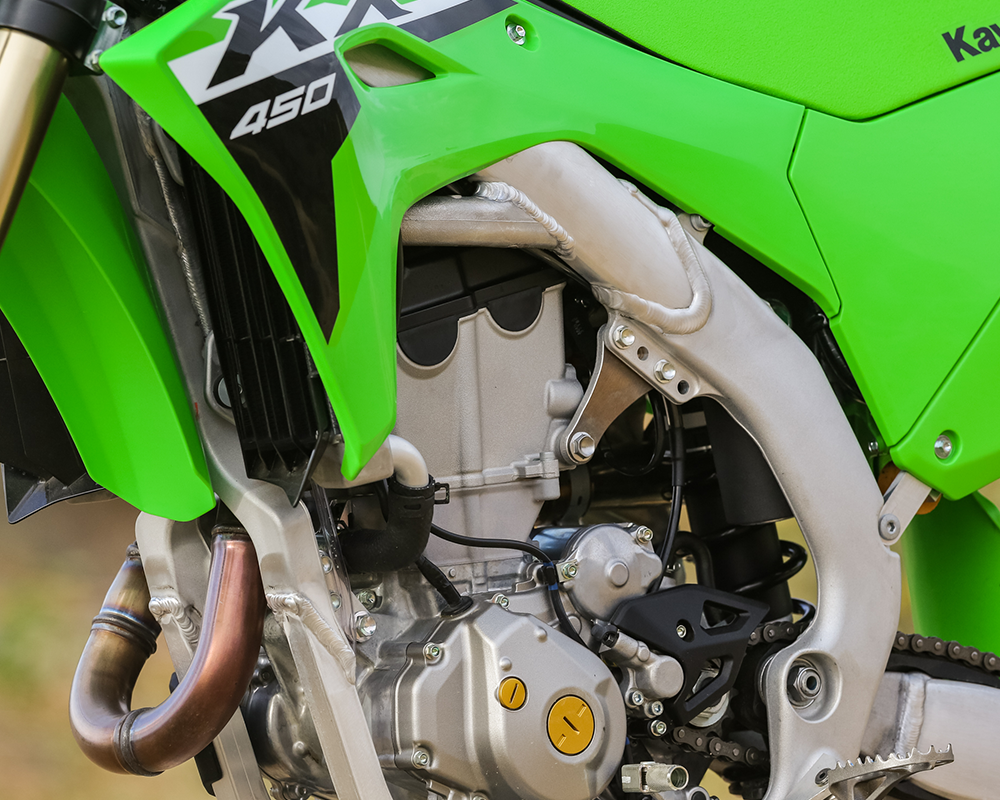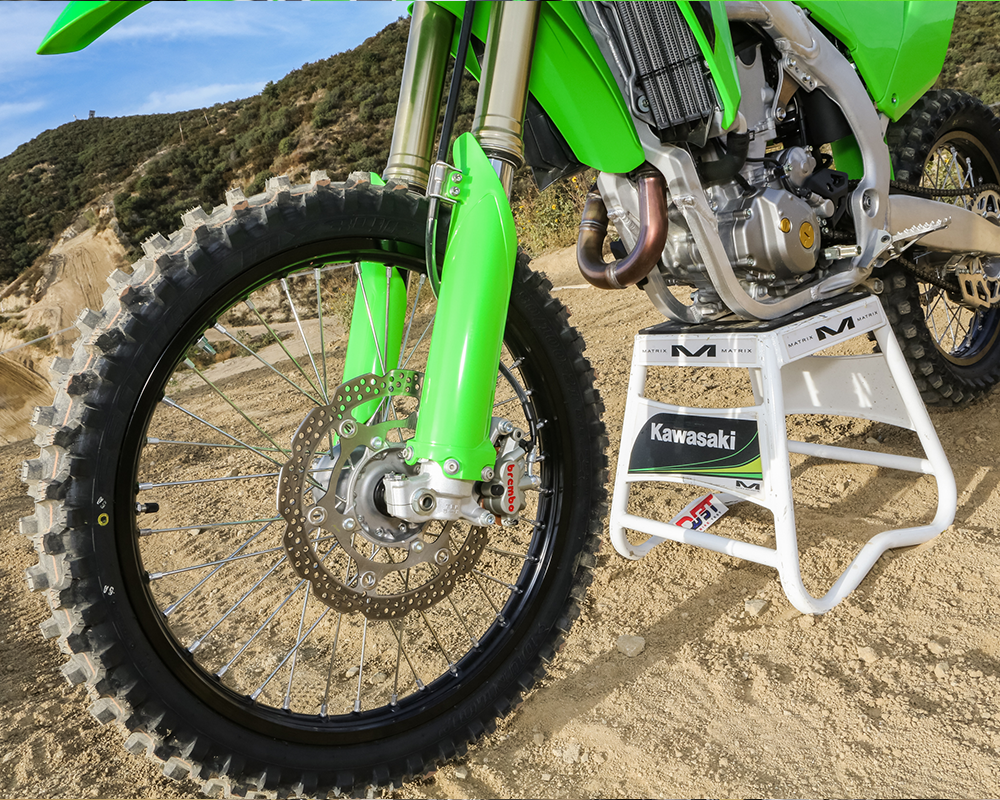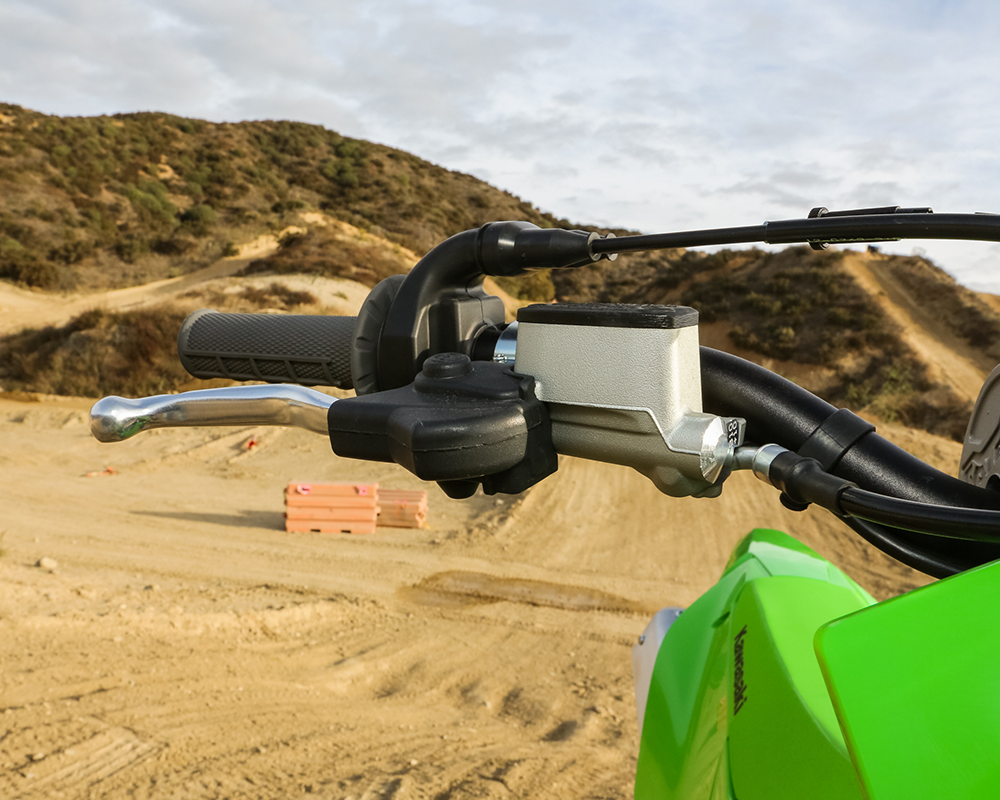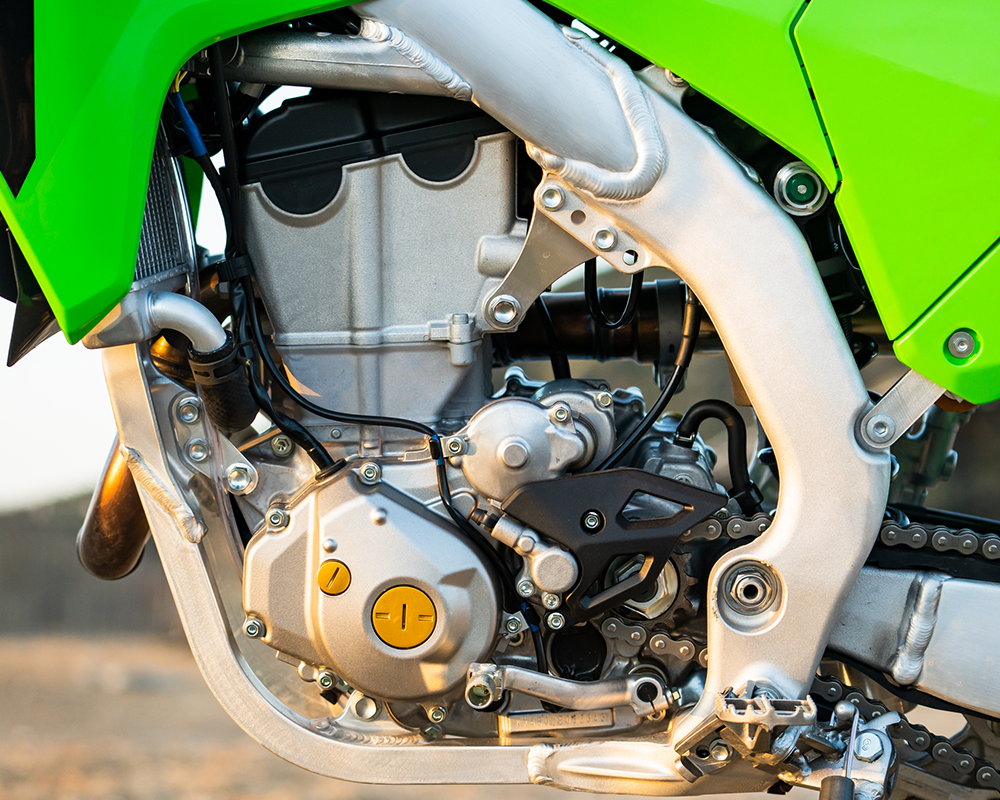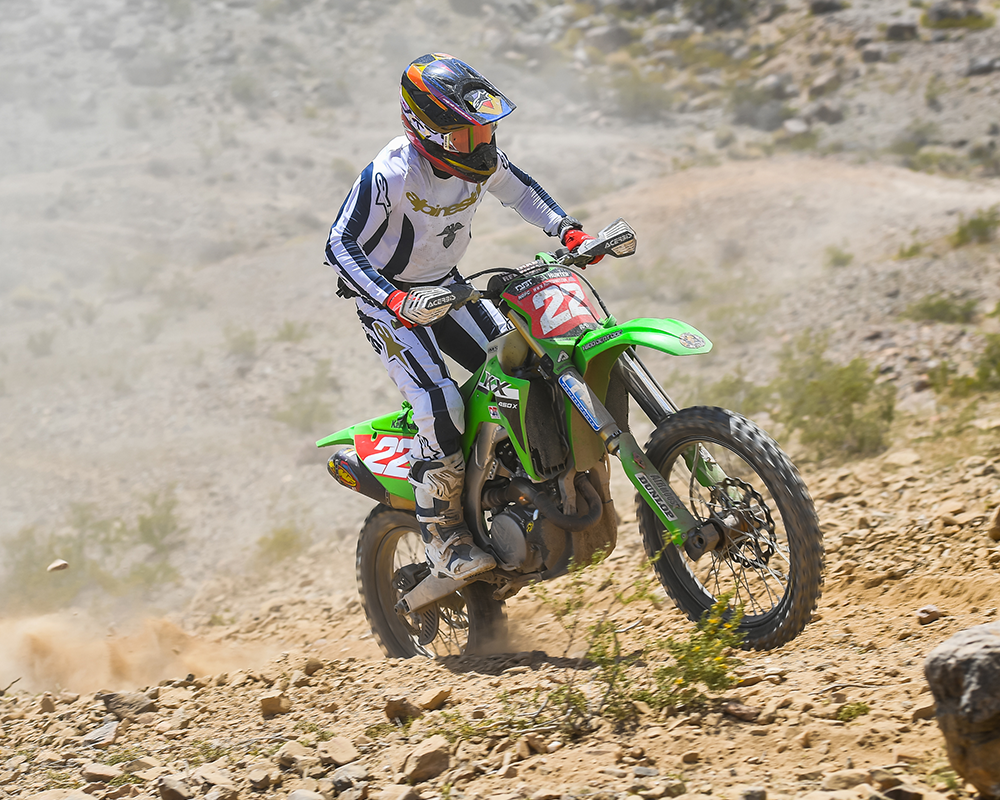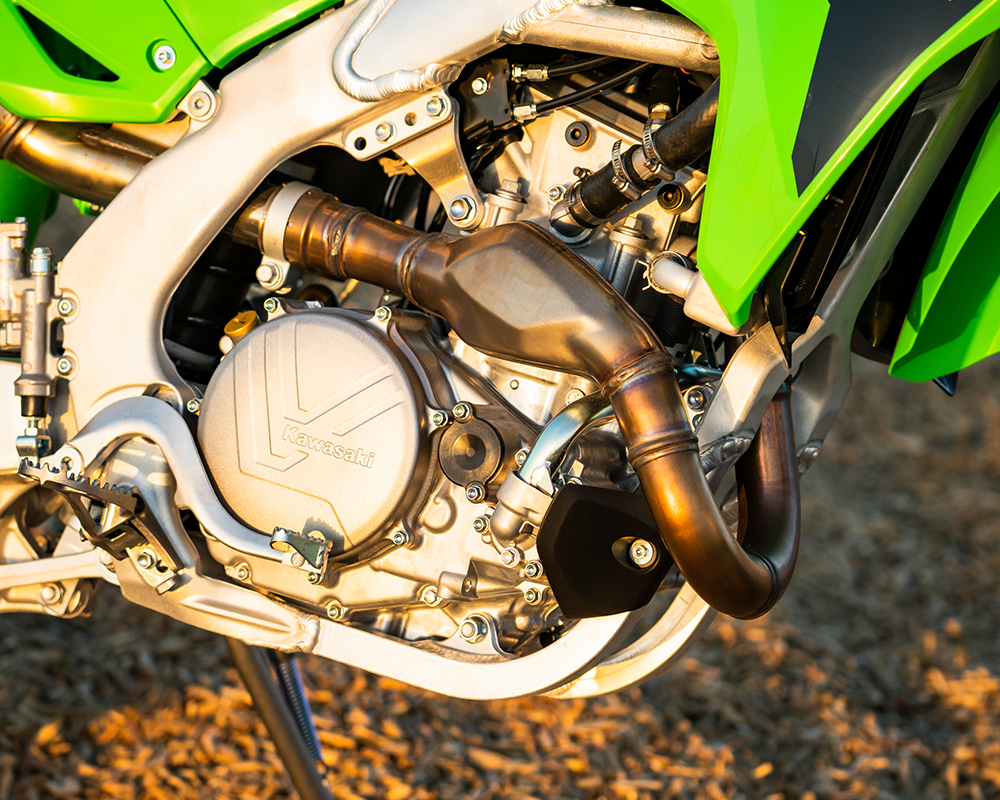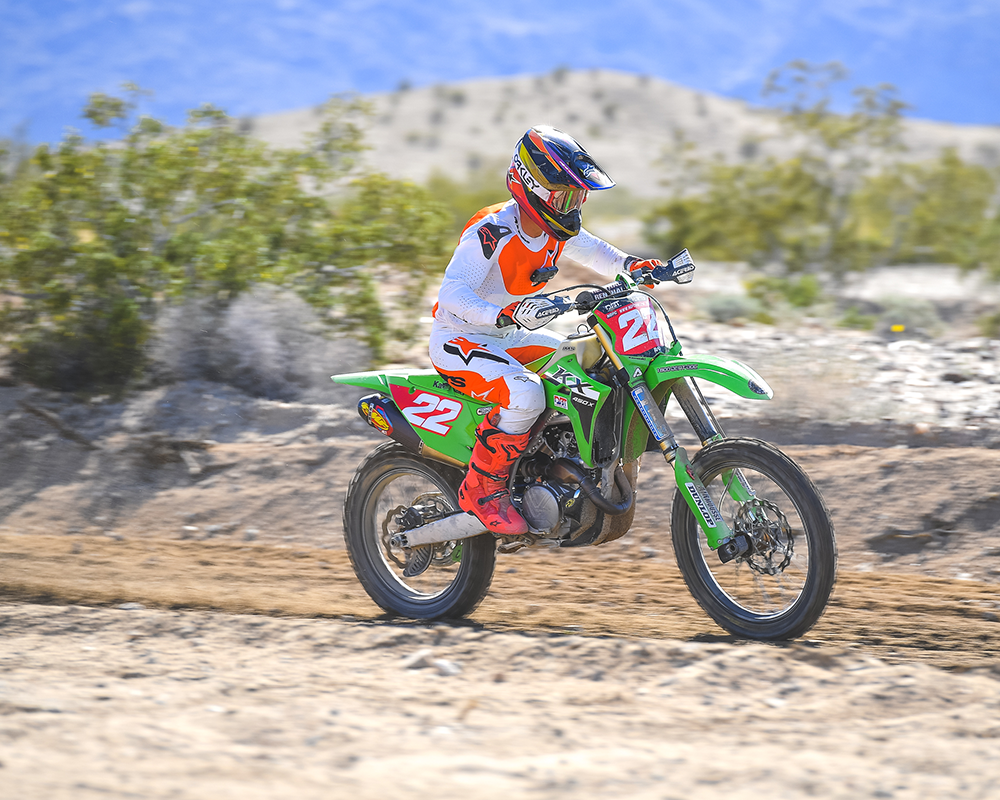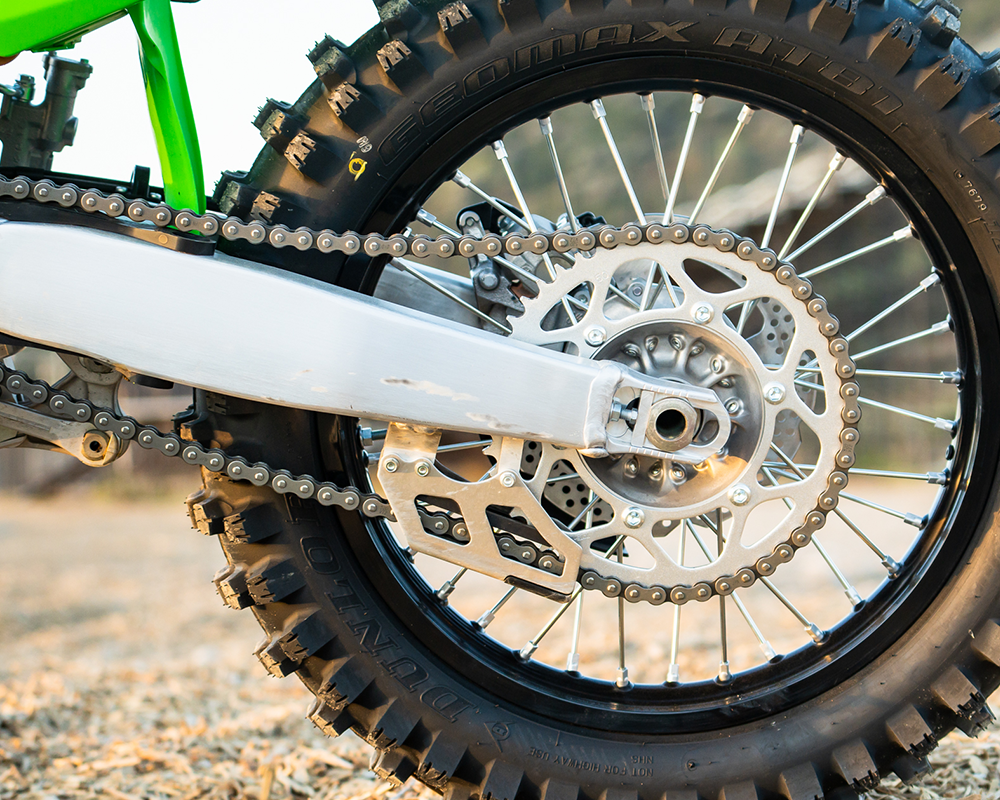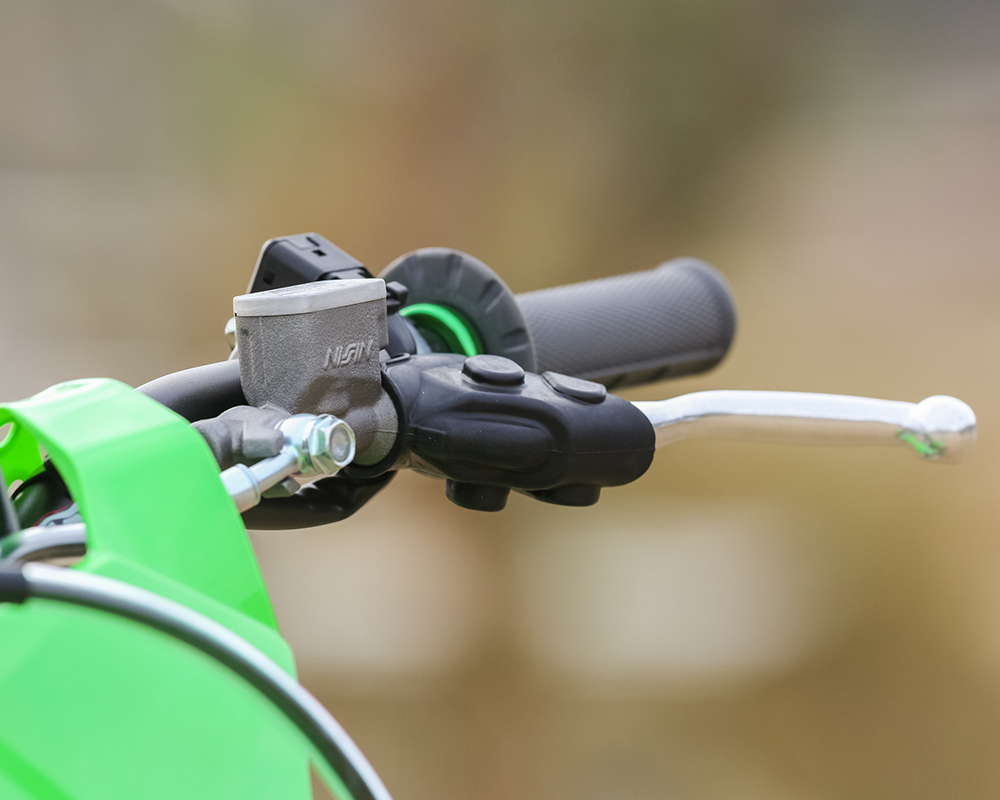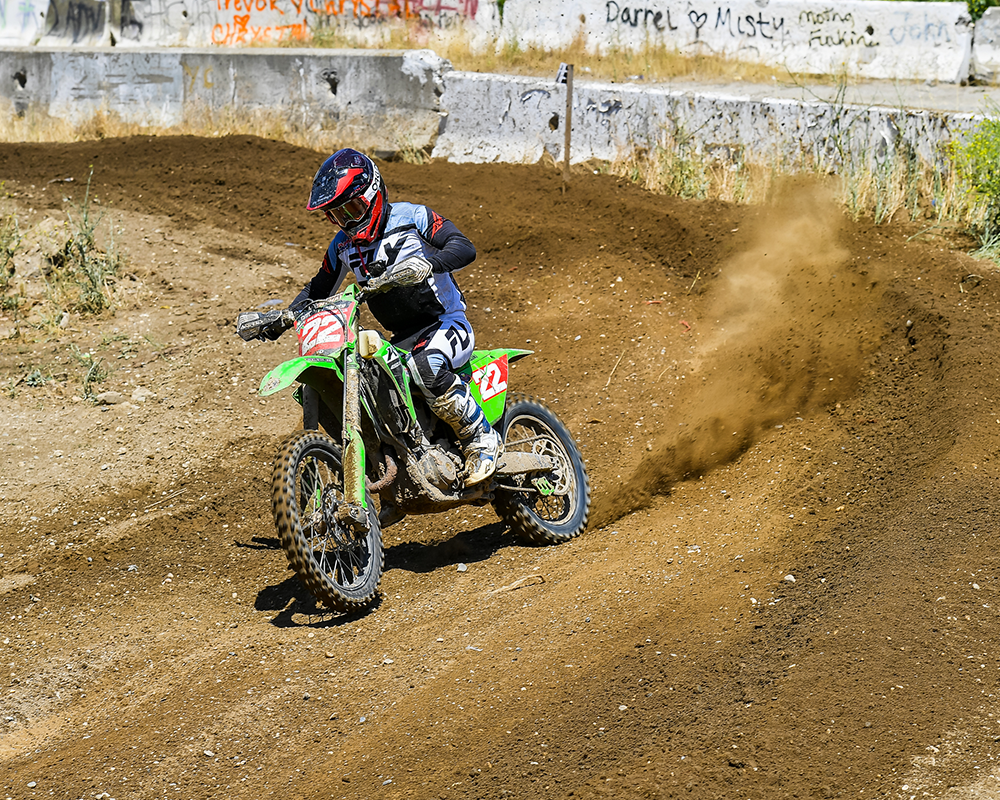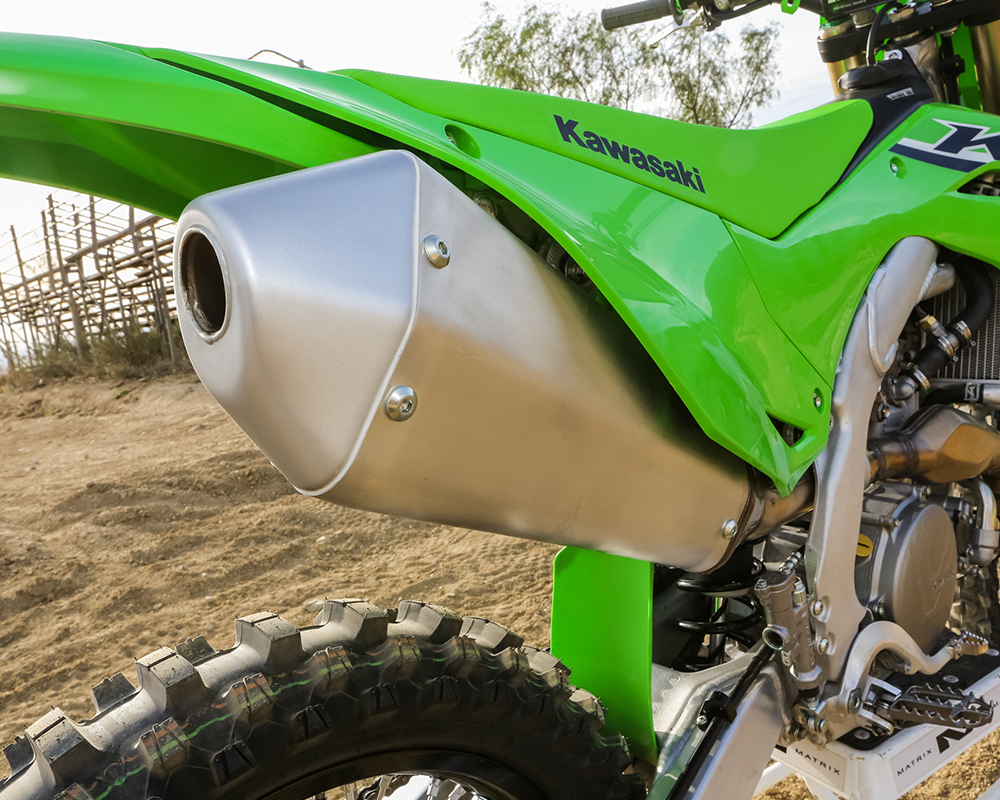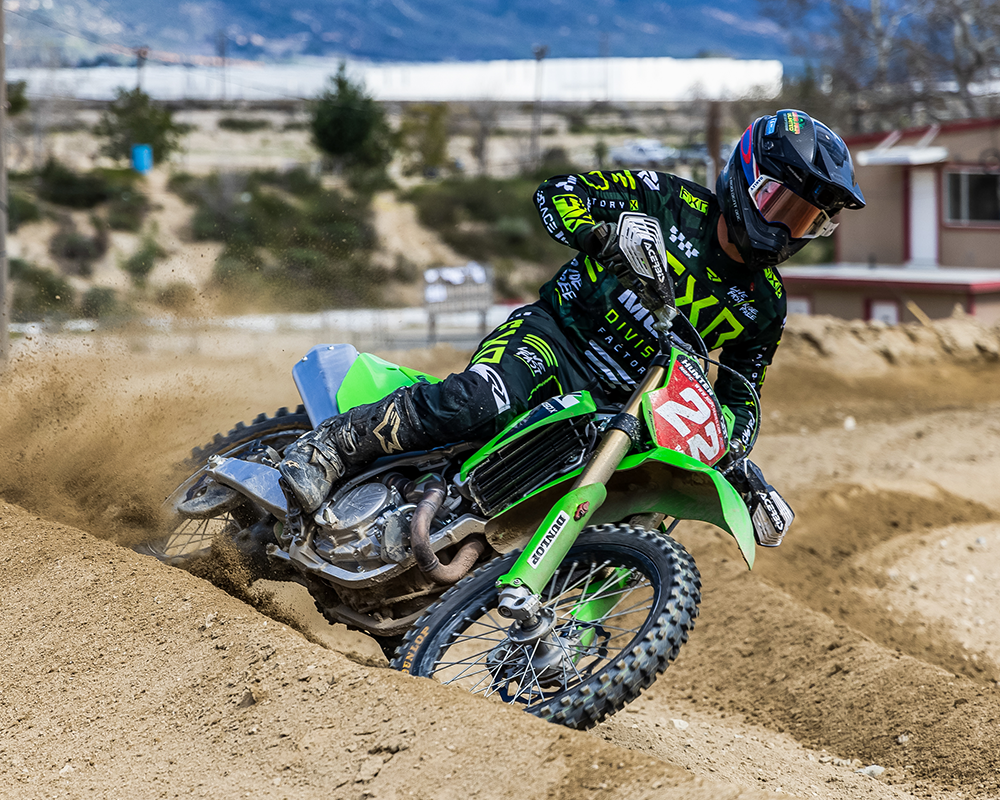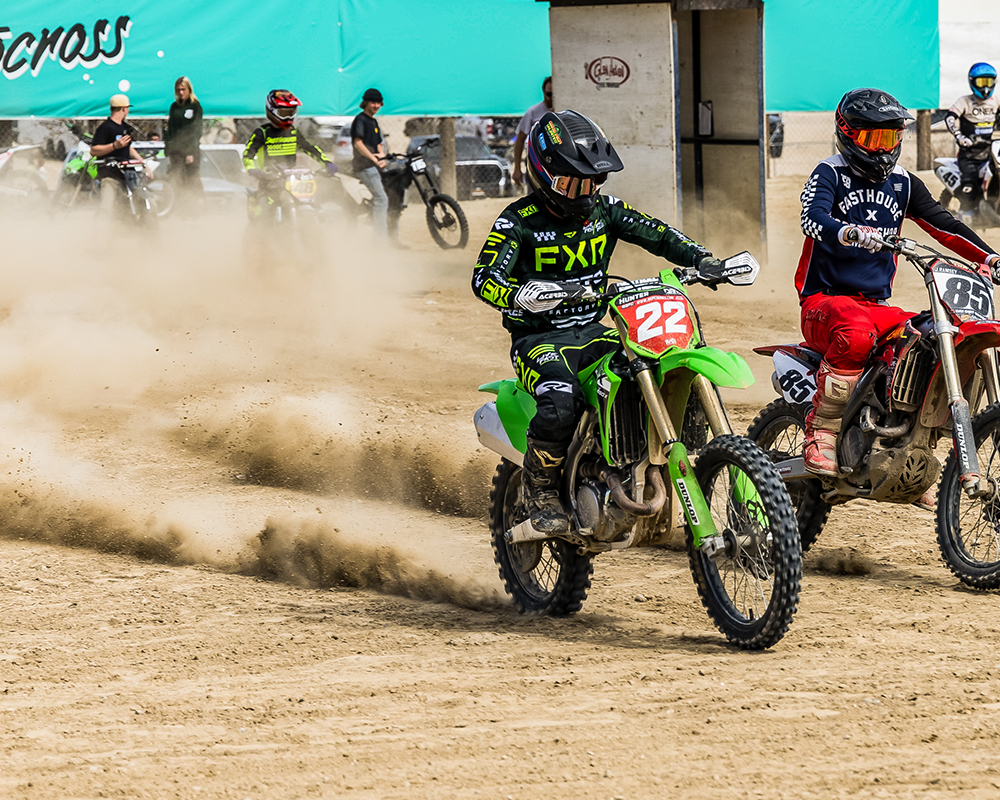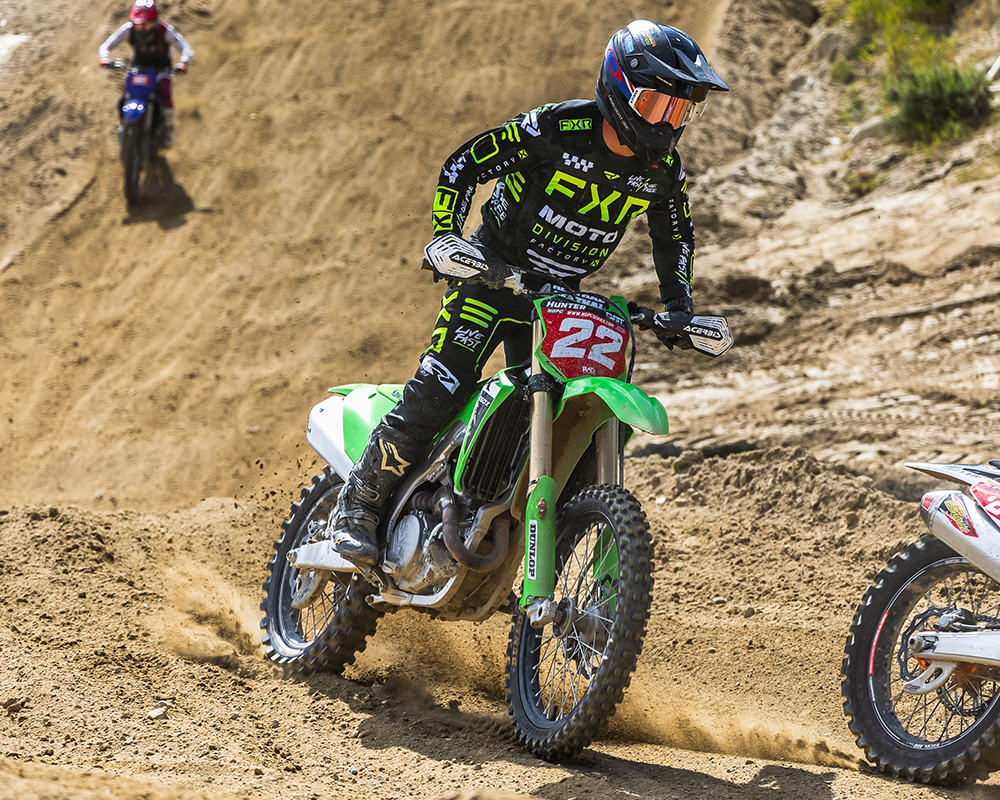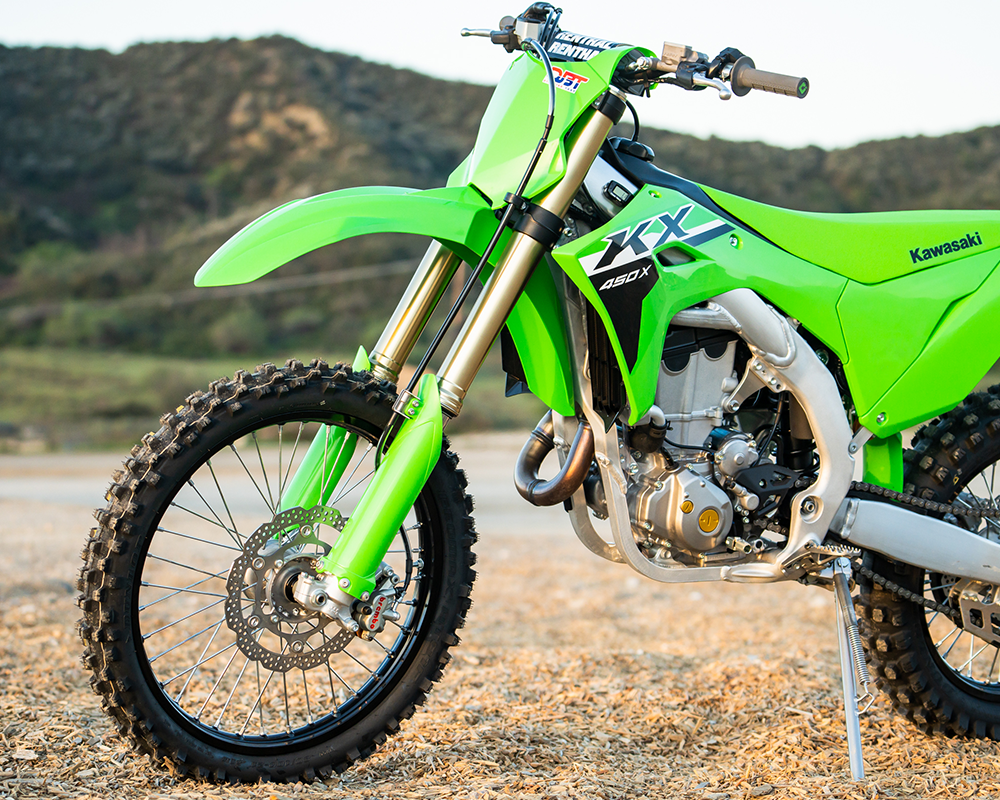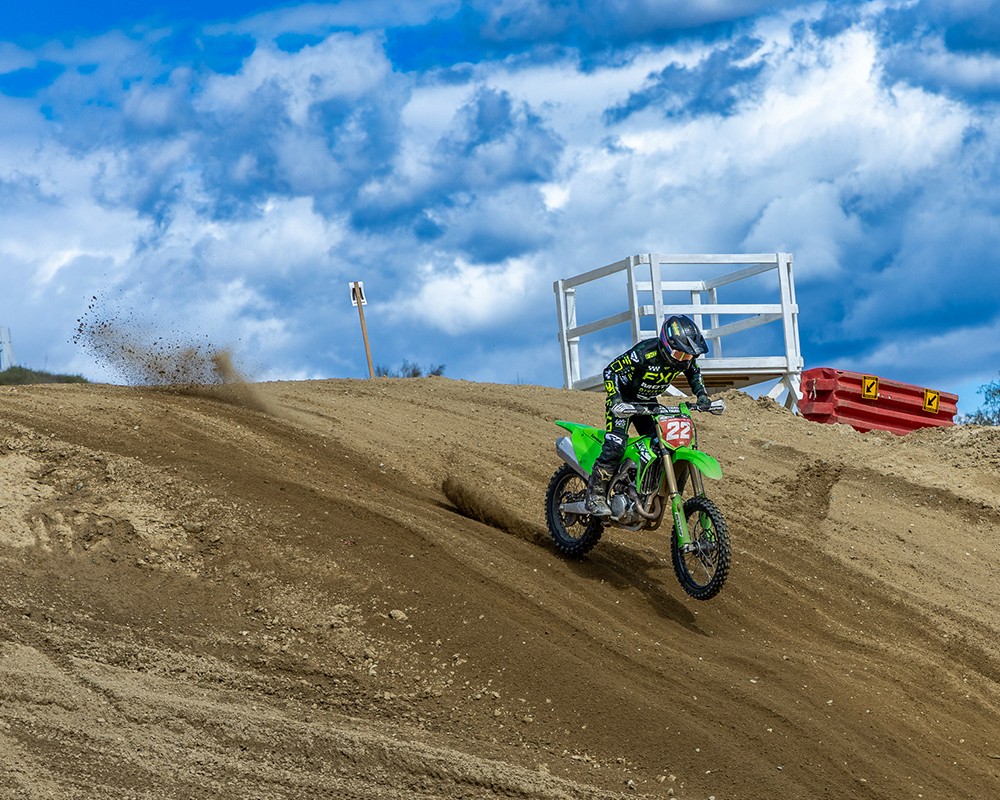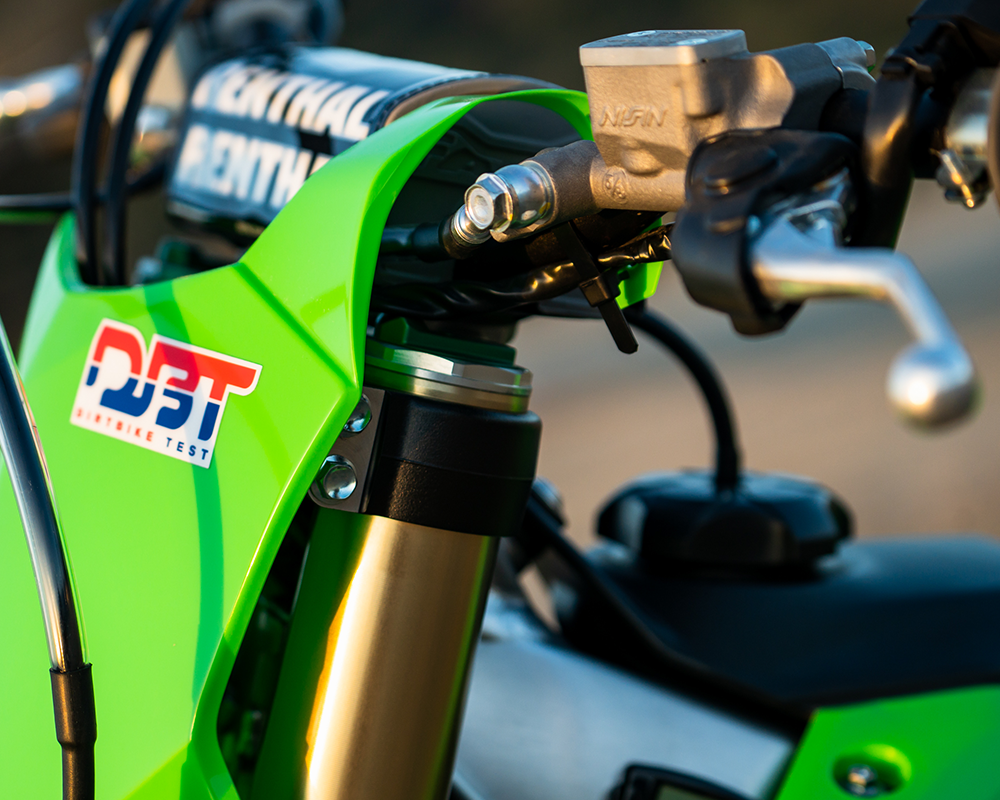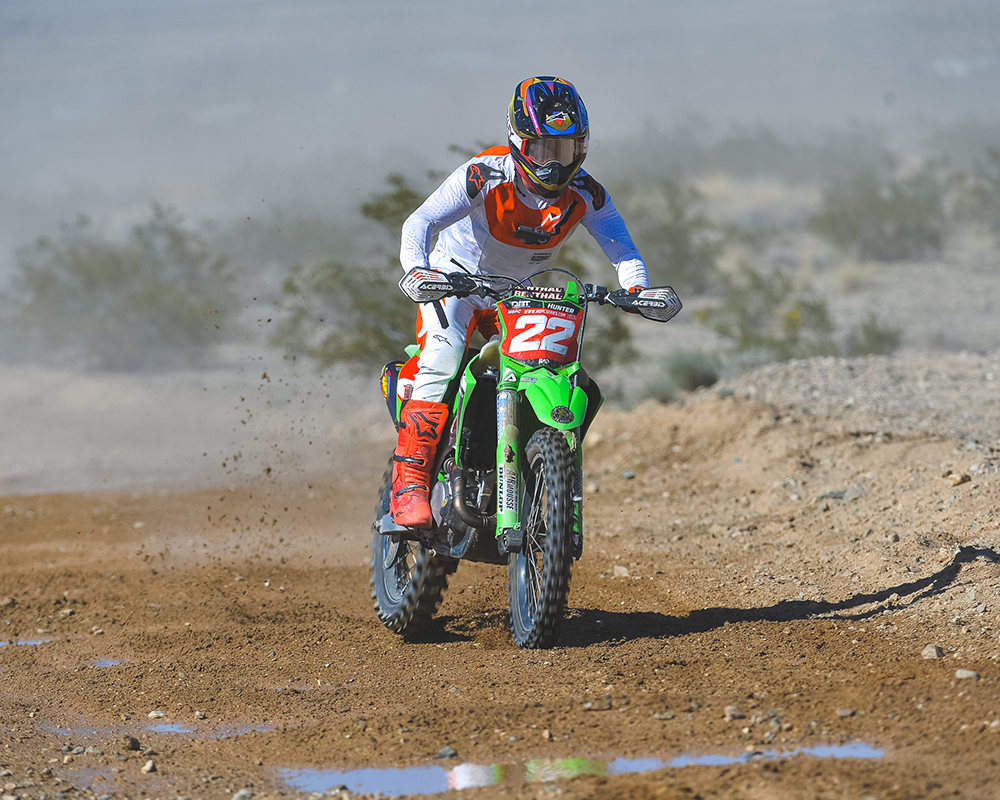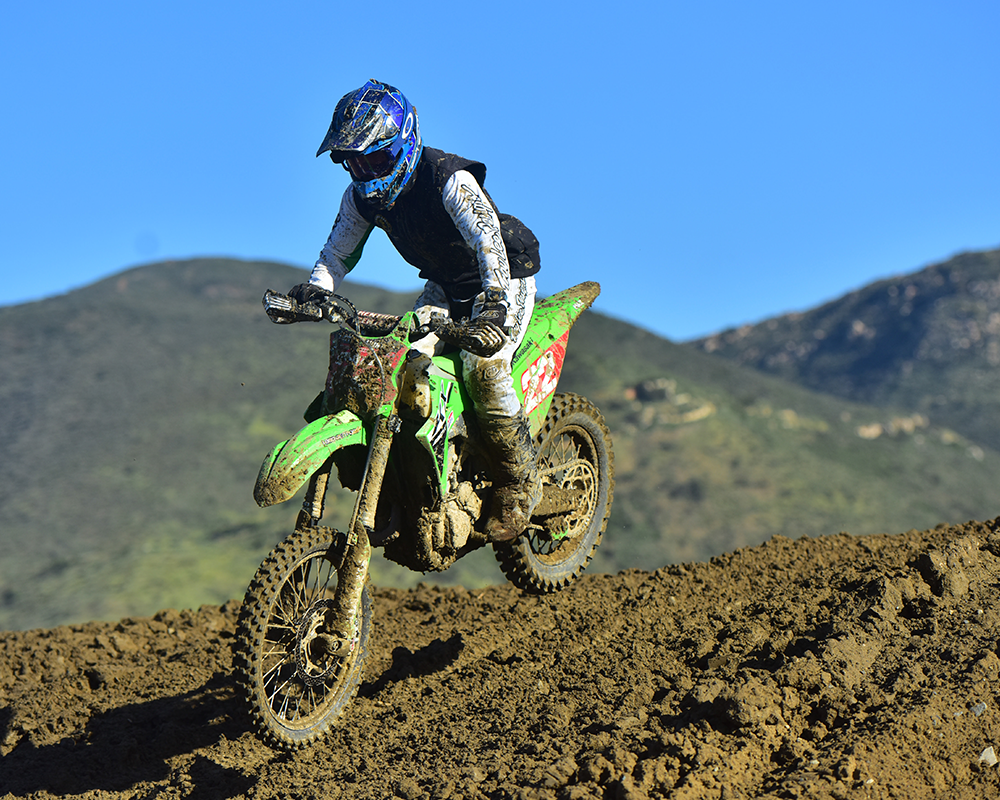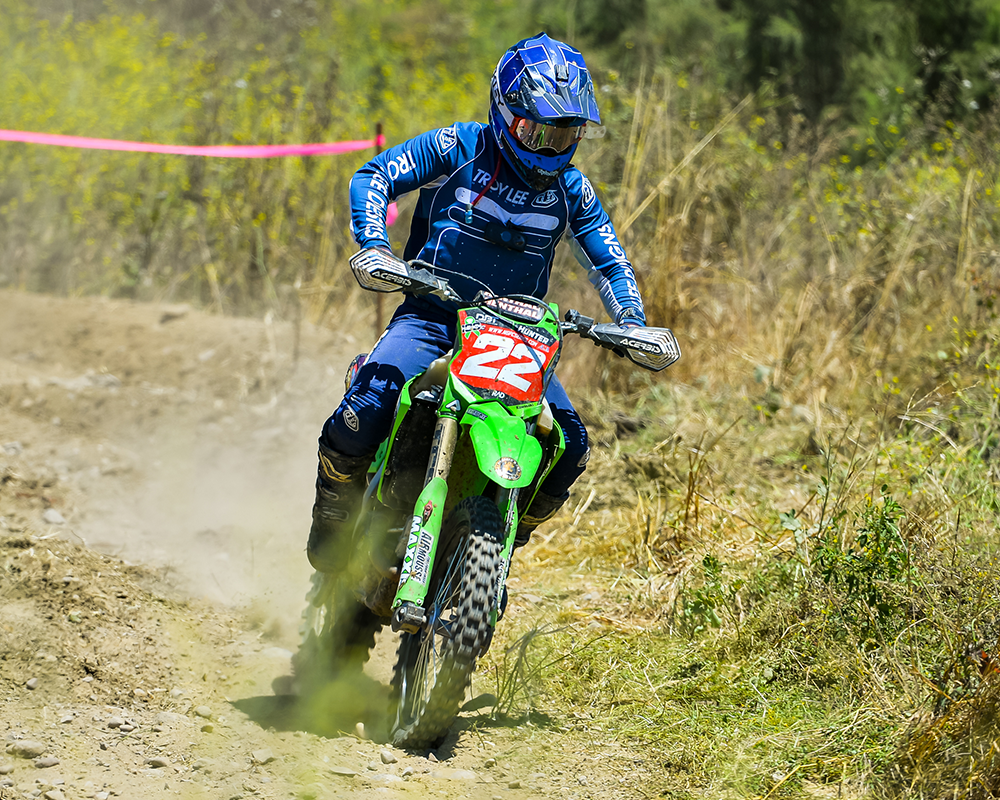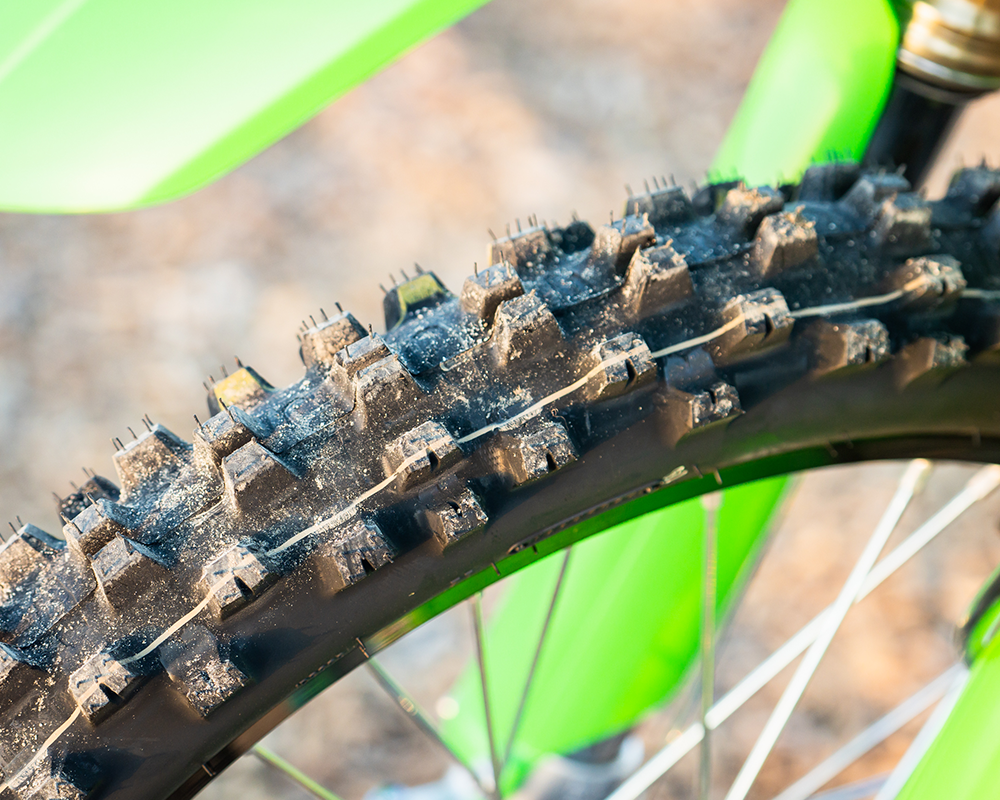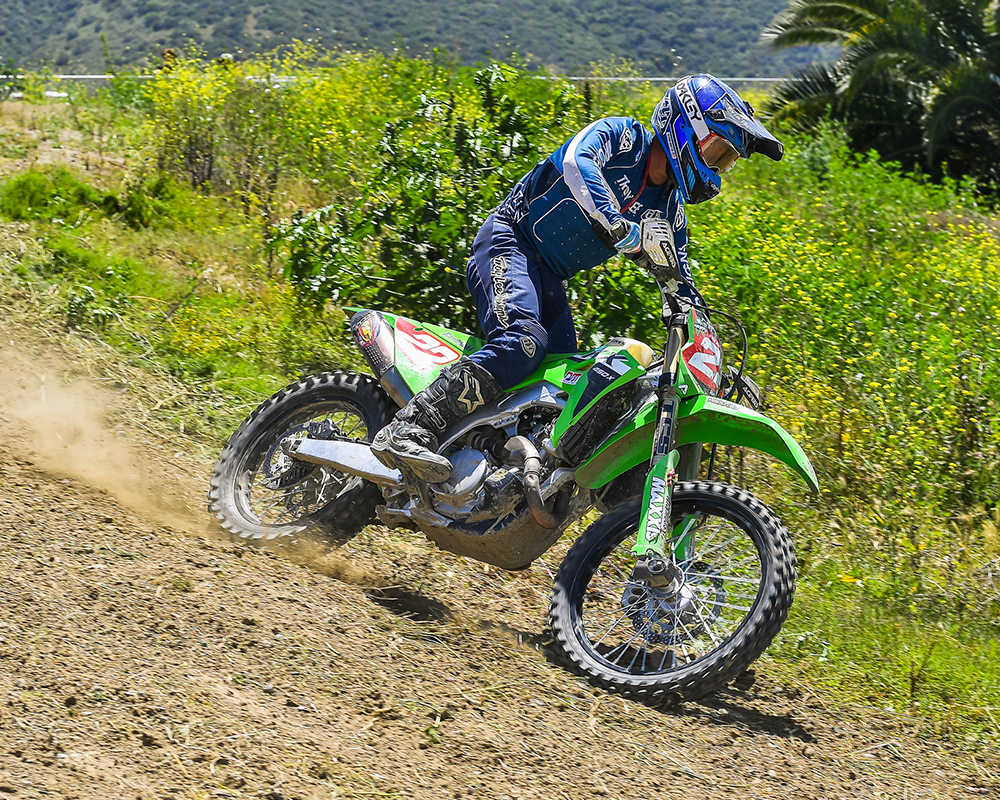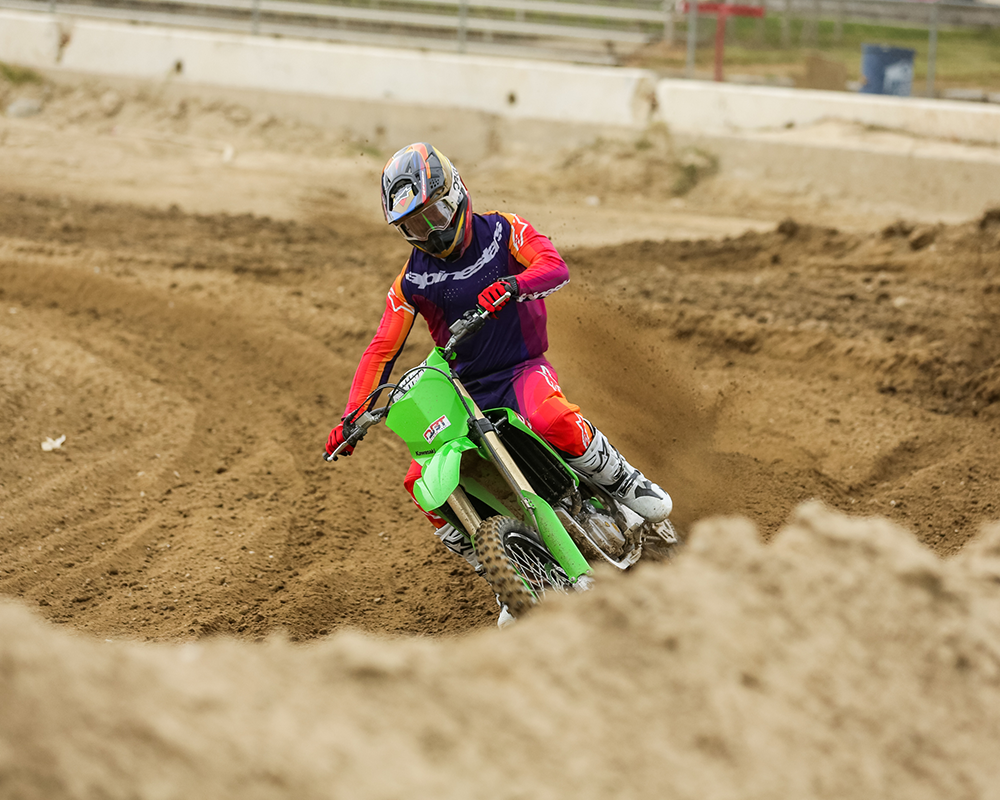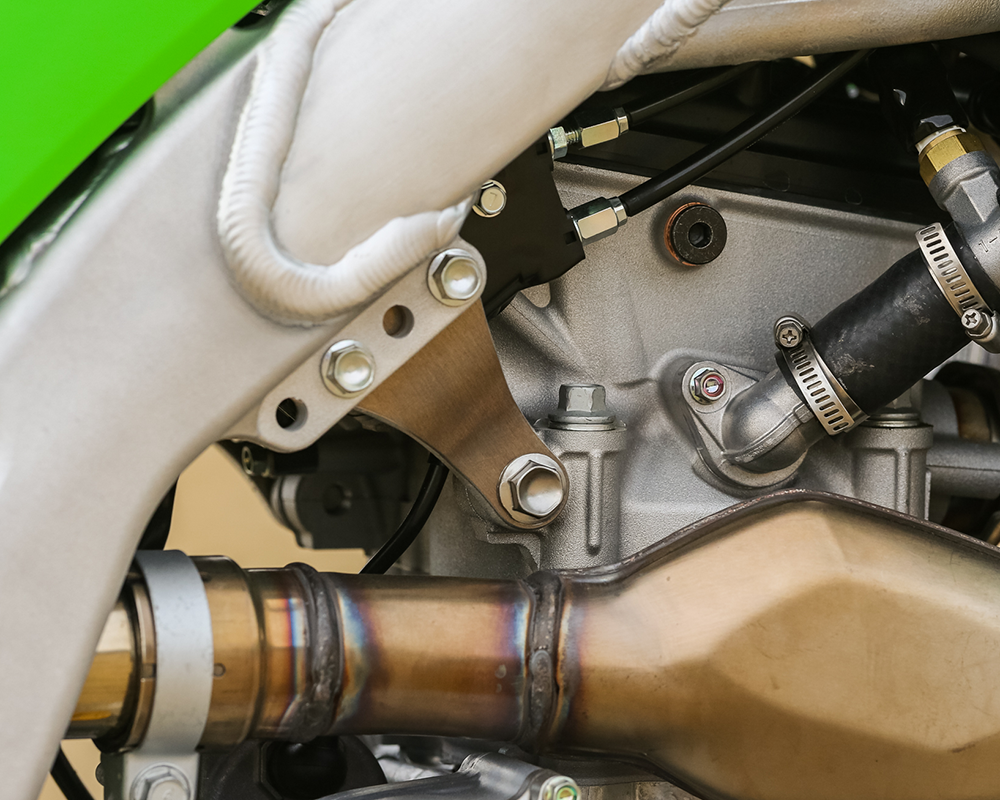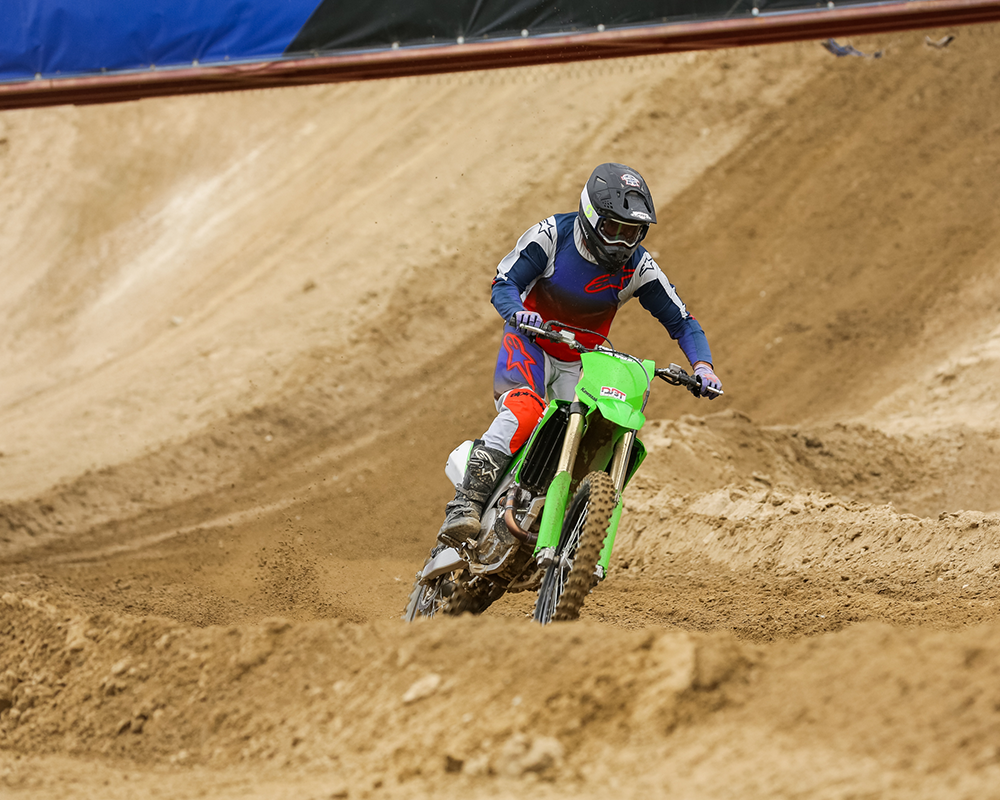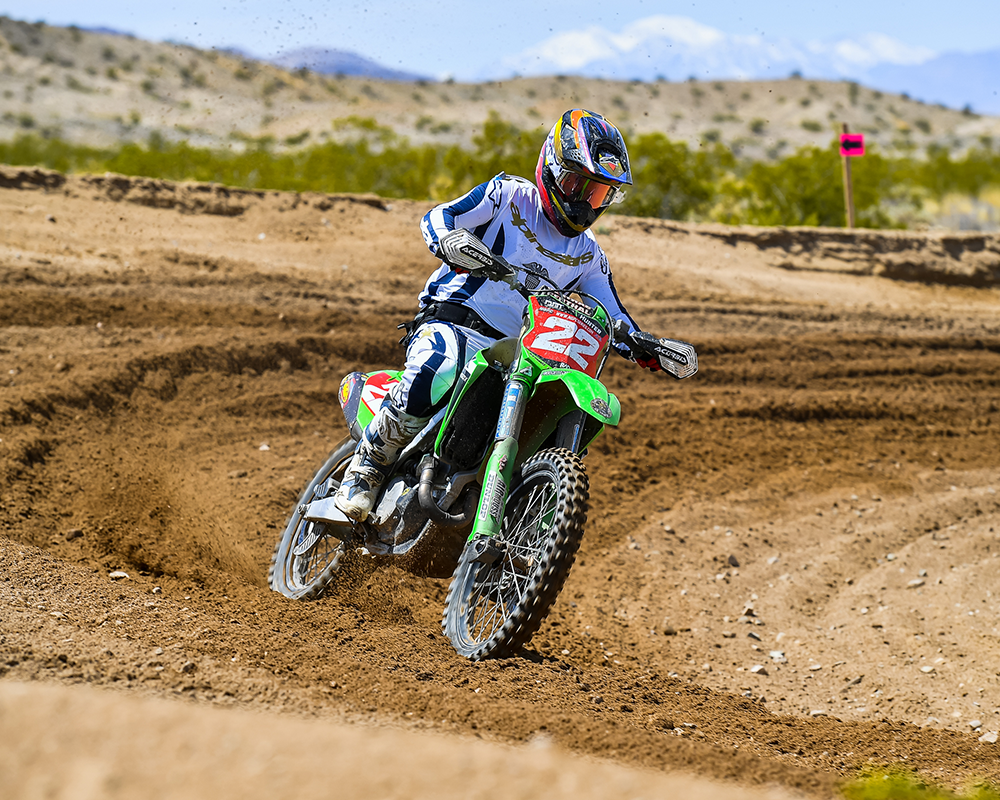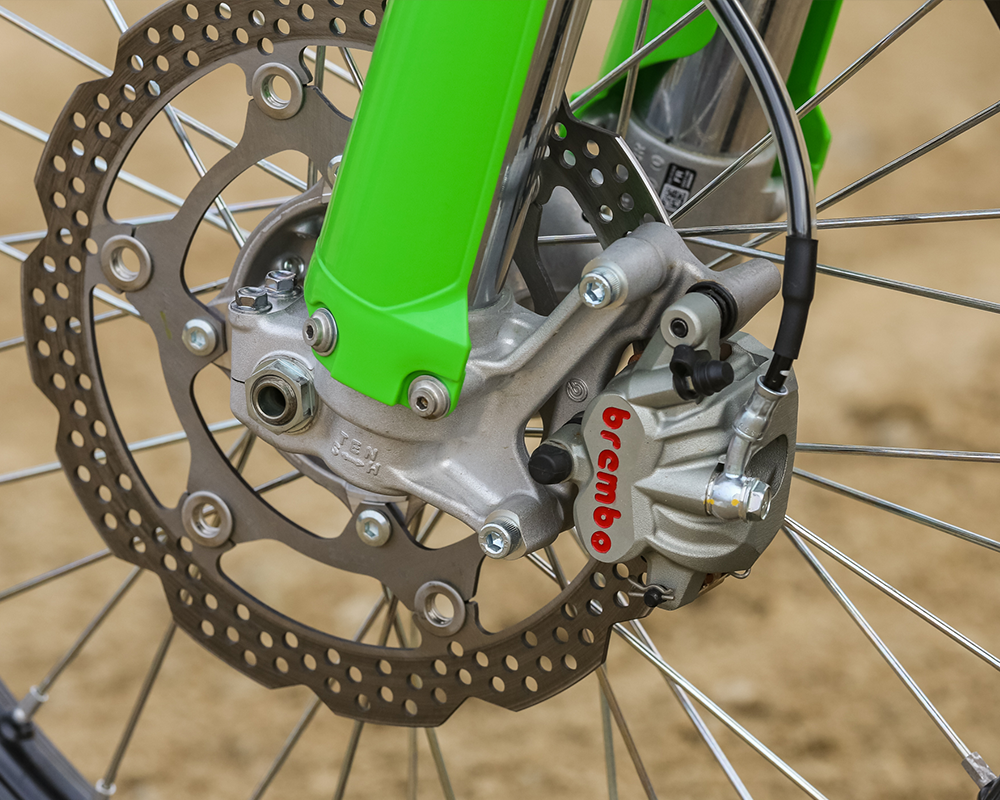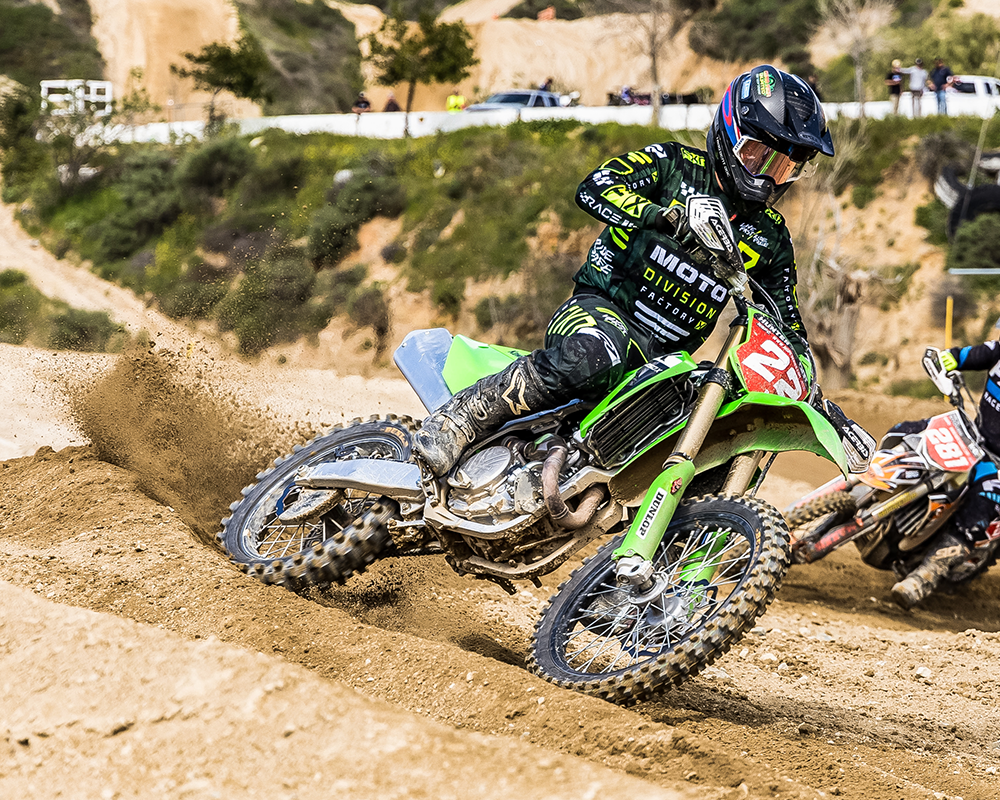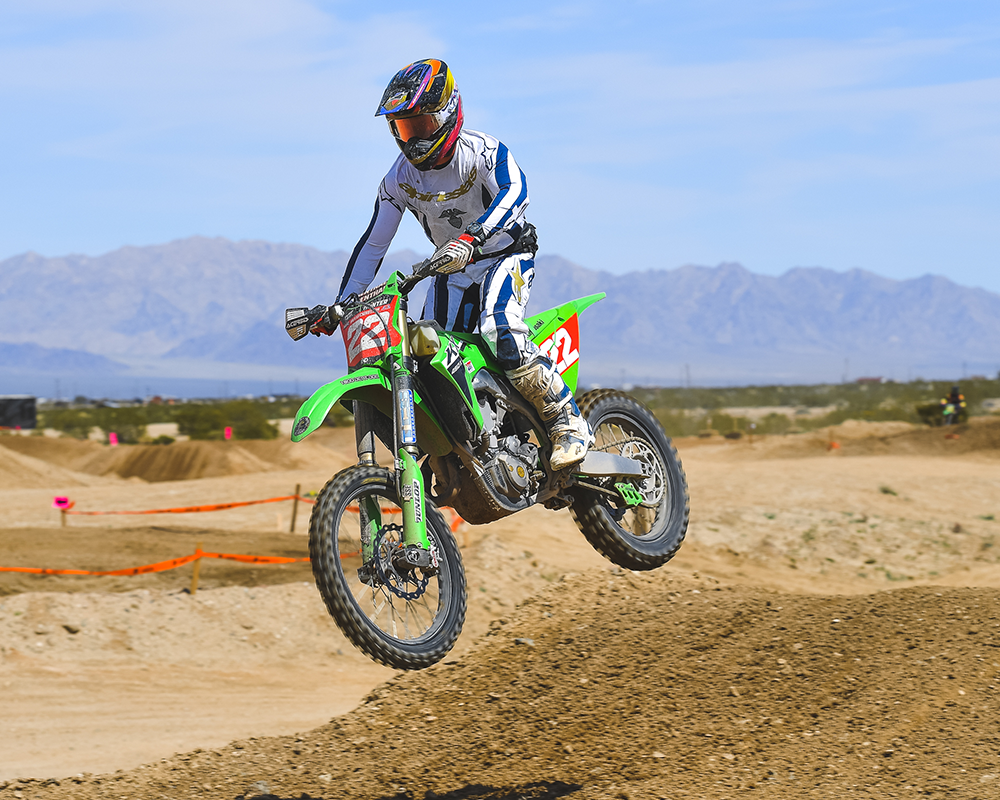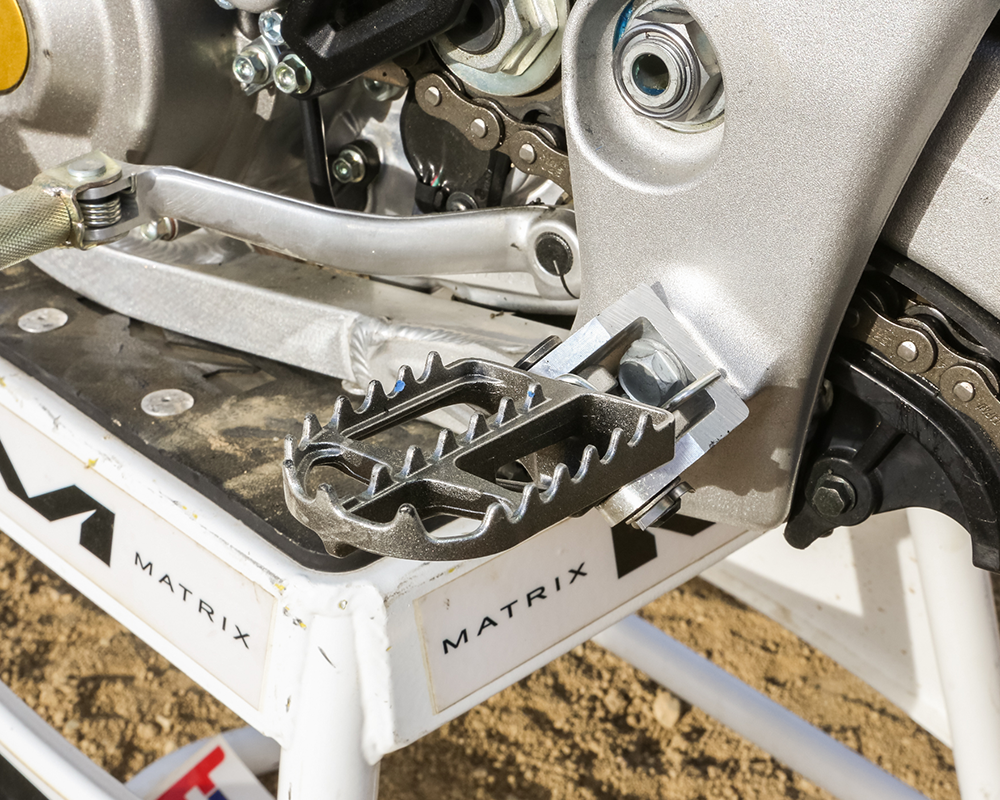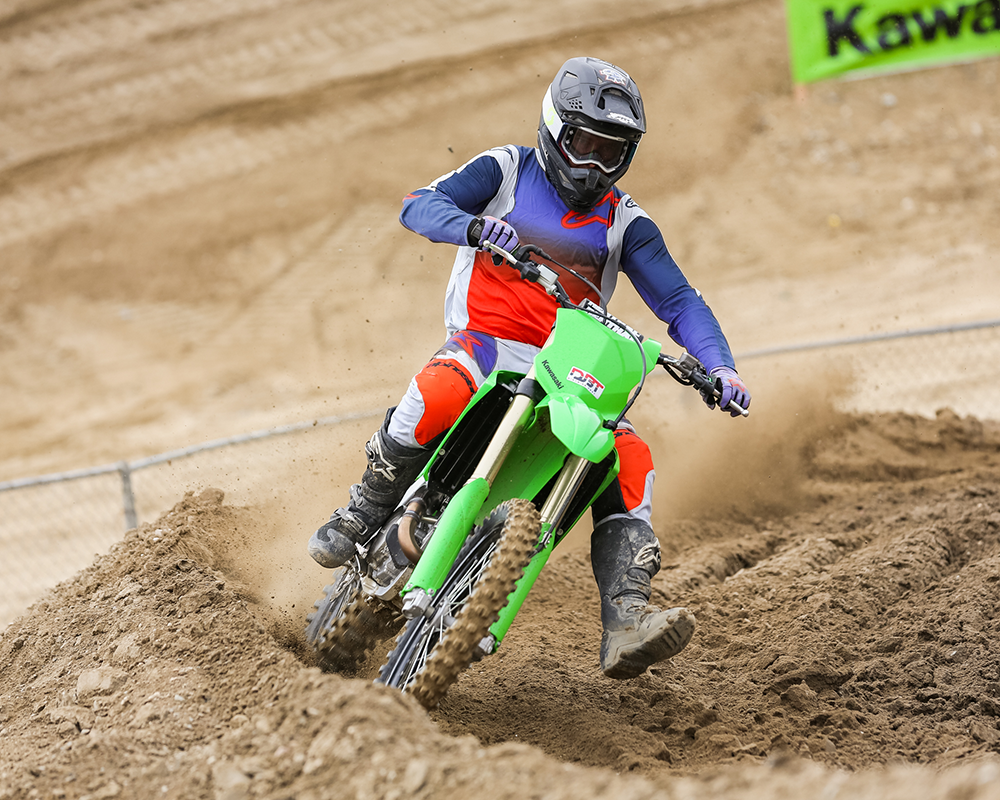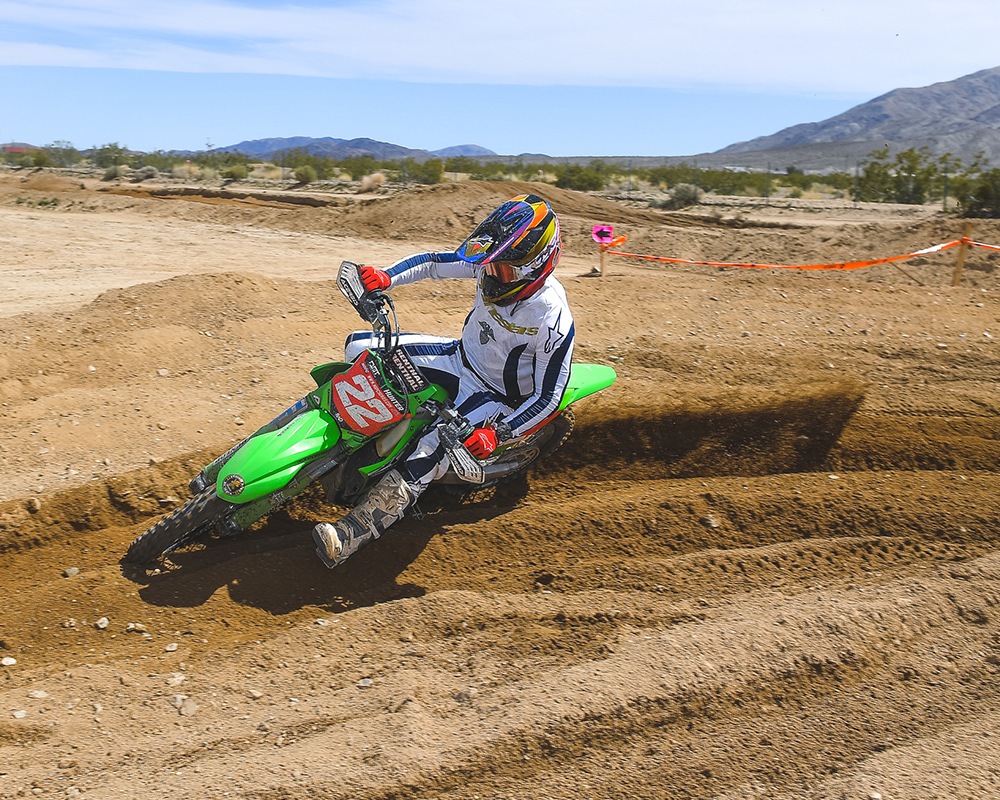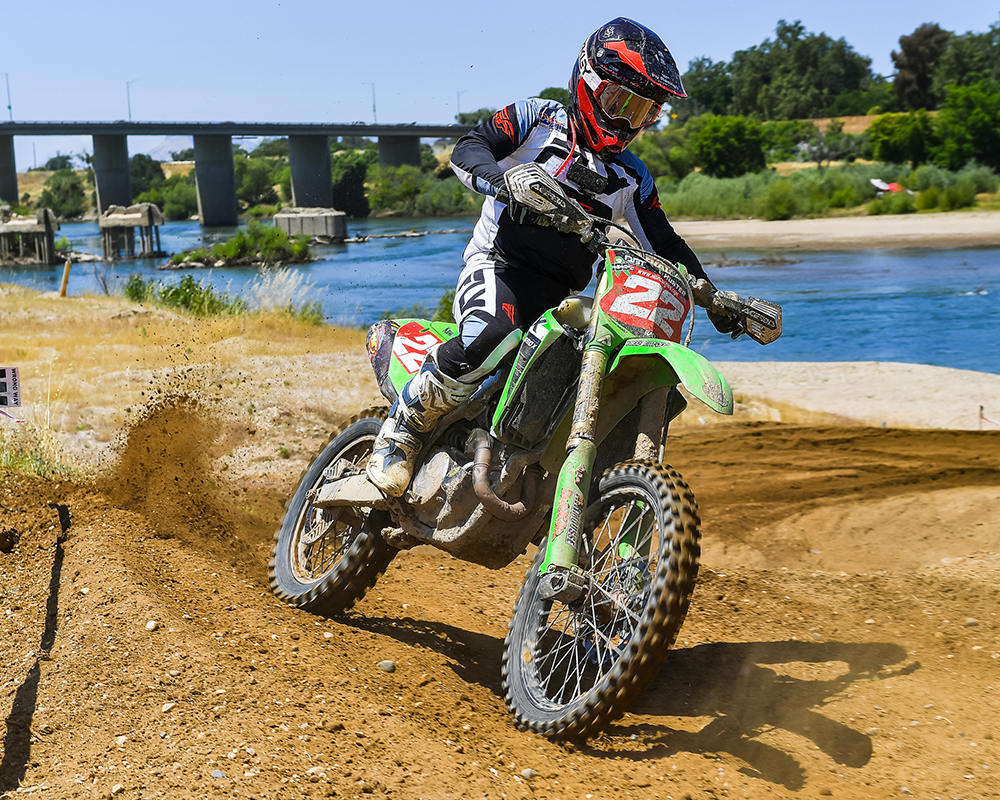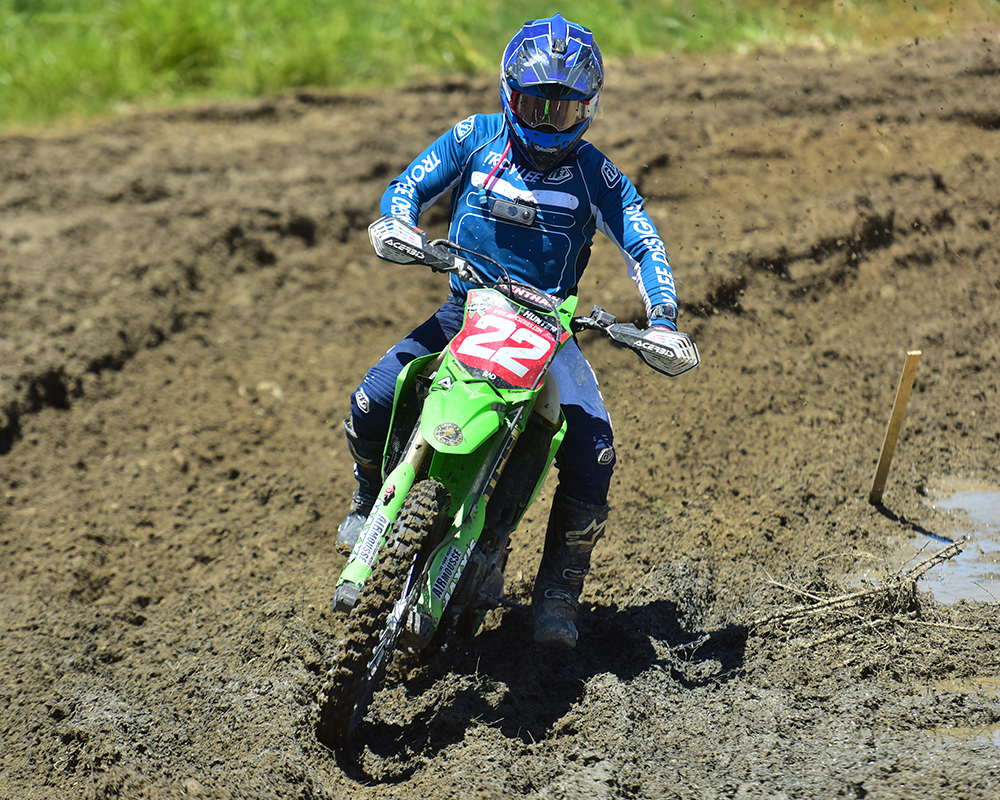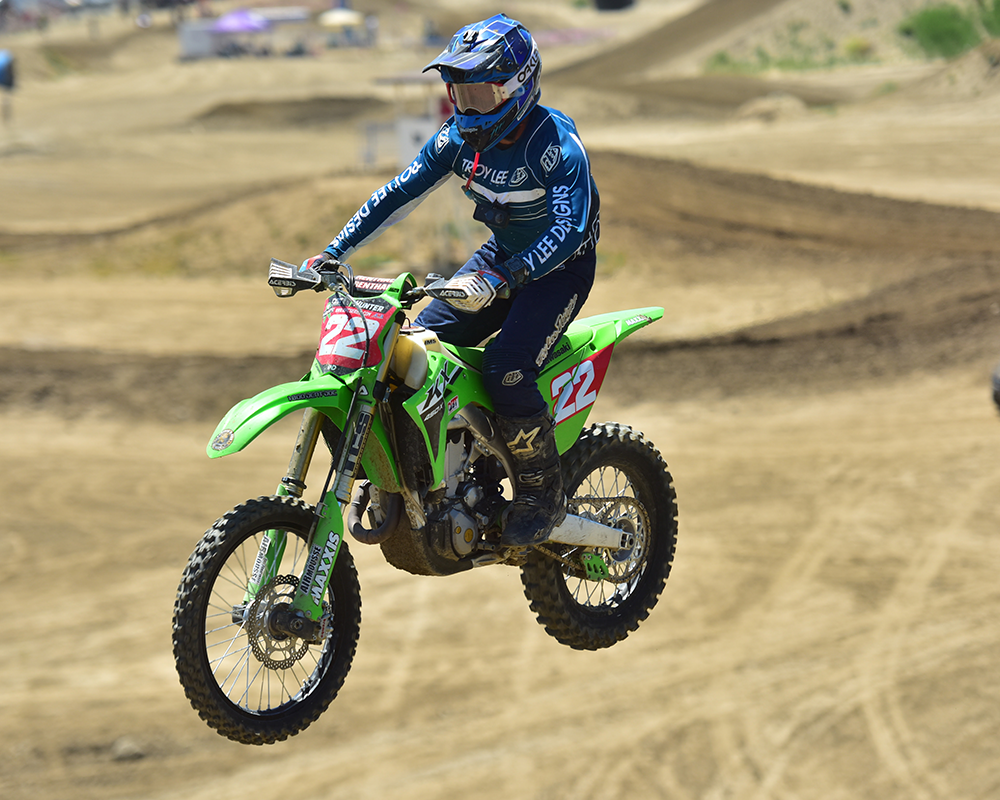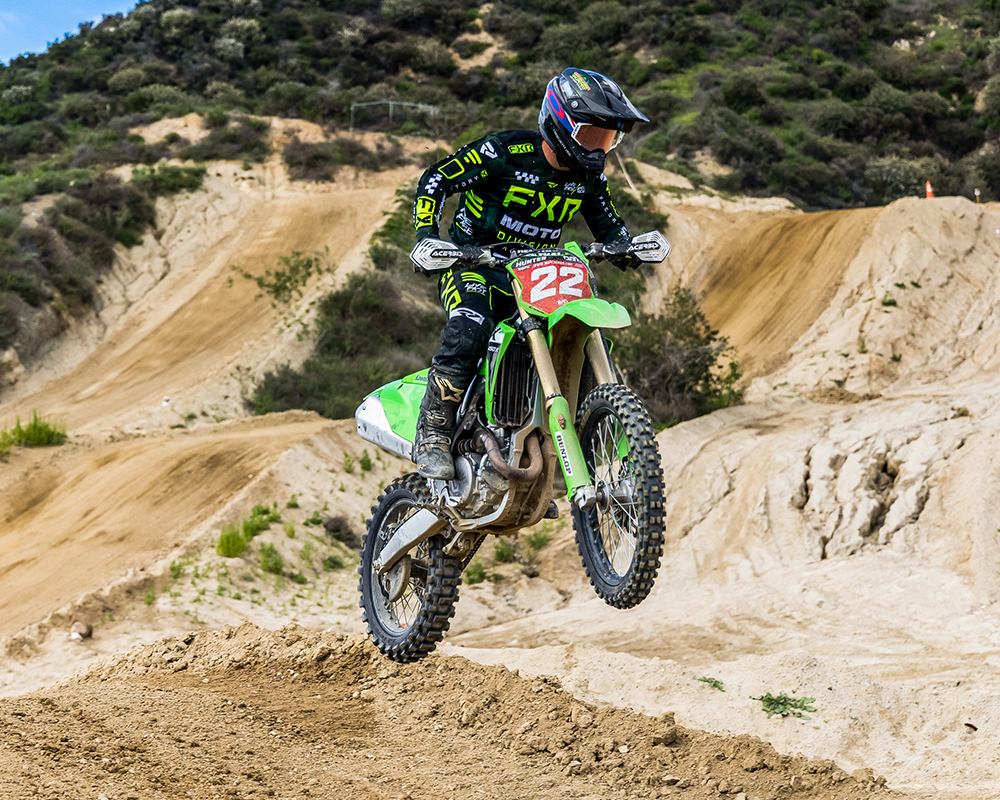2024 Kawasaki KX450X
Keeping Up With The Times
MSRP: $10,599
- Lighter, more agile motorcycle.
- Very easy to ride motorcycle all the way around.
- Neutral.
- Less compliant chassis in ROUGH conditions.
- Some feel the engine isn't as much as they think they need.
Introduction
- Kawasaki's competition 450cc off-road race bike.
Kawasaki is continuing their push into off-road racing and the release of the KX450X model a few years back ensures their commitment to it. Team Green was once the program to beat in the 90’s back when KX500’s ruled the roost in the desert and KDX models were raced in the woods. In 2024, they’ve released a heavily updated 450cc off-road race bike that sees all the same changes that the 2024 KX450 received. Is it enough to snag some championships and put itself on top of the box in the Pro and amateur racing scene? Time will tell, but Kawasaki is putting in the effort.
Changes
- Heavily revised platform.
- All new chassis and bodywork/styling.
- Engine top-end updates and Ride KX Rideology app.
Changes are abundant for 2024. Some bold new graphics give the KX a little different flare to the naked eye, but that’s just the start. The style and look of the new ride is fresh but still has that KX familiarity. Slimmer body work, Brembo front brake (a first for a Kawasaki moto bike), new electronics, frame, redesigned head and cylinder, and updated suspension are all part of 2024.
The lower end of the KX is very similar to the older platform except for larger big-end rod bearing and oil jet direction. The connecting rod is actually 5mm longer, yet the stroke remains the same. This changes the rod angle and also means the cylinder and new head have also been moved up 5mm. The cases are also slightly changed with updated oil passages and oil distribution to the top end components and crank. The head has been reconfigured with the new straight downdraft intake tract and center-port exhaust. The head still features finger-follower actuation, yet the intake valves are now 38mm which is 2mm smaller than the old platform. Cams have also received some updates.
Items such as the coned-disc clutch, transmission, and lower engine components are some of the select few items that carry over from the older platform. Even the fuel pump pressure has been increased to improve drivability. Gone are the swappable couplers and now Kawasaki is in with the tech generation. The new platform is right there with the masses with a smartphone app that controls engine mapping, tracks maintenance, and has a place to log setup notes.
The on-the-fly power mode selector can change between two maps, two traction control settings, and launch control. Each of the power modes can be mapped to your desire using the App. Settings can be selected, even while riding, as long as the throttle is shut off. A small Bluetooth sending unit can be linked with a smartphone after the app has been downloaded. This is a first for Kawasaki moto bikes.
The frame retains similar pickup points yet has been completely redesigned. First to accommodate the straight exhaust and downdraft intake but also to improve handling and cornering. Torsional rigidity parameters have been altered to improve front-wheel feel in corners.
Showa is still part of the KX450 with a 49mm fork but internal settings including larger inner tubes, valving, and the free piston has been revised. The shock length is shorter (by 32mm) due to the lower mounting point on the frame but the overall stroke remains the same. A new machine process allows for better consistent roundness and less friction within the shock body. Valving settings are new, as is the internal gas pressure settings.
Triple clamps and swingarm are carryover items yet the linkage is all new due to its slightly lower mounting position on the frame. The rising rate of the link is very similar to the prior generation. The rider triangle has not really been altered with regard to seat height, footpeg position, and bar position. However, the bodywork is all-new with a smoother radiator shroud area with less catch points and it’s easier for the rider to move around on the bike.
More notable changes include ODI lock-on grips for feel and ease to swap out if needed. Rear hub has been optimized 58mm (12mm larger) for better feel and traction. Tool-less air filter changes and an all-new air filter design are included. Dunlop MX34 tires come stock. Footpegs and handlebar position are still very adjustable depending on the rider. The exhaust is new with a shorter muffler for mass centralization and the header resonator is now flat and tucked in further.
Power
- Very smooth, user friendly delivery.
- Benefits from muffler and ECU modifications.
- It has the guts to be a fast motor.
The KX motor is good for a majority of the riders out there. It’s certainly not the fastest in its class. However, the power delivery is very rideable and user friendly for the masses, and in a true off setting, very effective.
The KX450X boasts smooth pulling power from top to bottom. It’s very rider friendly and is praised by many of our test riders, especially our vet and novice-intermediate skilled riders. The smooth power delivery is easy to control in technical terrain like rocks, roots, and tight singletrack. There is a good amount of torque down low, and unlike the previous gen motor, there isn’t a hard hit at the crack of the throttle at low RPMs. While there is torque, there isn’t a lot of power down low, but that climbs as you build into the mid-range and eventually into the top end.
Overall, the motor likes to be ridden hard and aggressively to go “fast” in a west coast off-road environment. The power is similar to a 350cc four-stroke in a lot of ways, which in our eyes is an ideal amount of power for a vast majority of riders and racers alike. It might not feel fast in the pits, but it’s effective on the track and trail. When raced stock, the bike pulled starts and was competitive on power against some hopped up 450’s of other brands, showing it’s not slow like you might think or feel, it just puts the power down to the ground very well.
The transmission is a point of interest for us. As a GP racer, the 5-speed motocross transmission is enough most of the time. However, when you go to the faster desert or the tight trees, the weak points are shown. This isn’t a design flaw from Kawasaki either - most bikes in this category share the same transmission with the motocross models – but it is something we’d wish would change. Being a 450, it has the power to pull a semi-wide ratio transmission, or if we’re really getting greedy we’d like to see a sixth gear added.
To put it simply, first gear isn’t always low enough and fifth gear isn’t always tall enough in a true off-road setting. That’s not to say we couldn’t compensate with gearing to get what we needed, but it is just a tad less versatile in that way. In general, the KX transmission is on the taller side and 2nd gear is very usable. With that being said, you don’t run through the gears ultra fast like we experienced on the CRF450RX last year, but it becomes a little bit of a consequence in the technical terrain as first gear is a little too tall if things get tight.
For desert riding/racing, a 13/47 or 13/48 gearing combo was mostly enough to cover fast valleys and some roads without being overly tall for technical rock sections. If we venture into the mountains and trees, 13/51 or 13/52 gearing should be enough to get you through. This bike hasn’t been as prone to stalling like the last bike, which is a big positive when riding off-road. Our go-to gearing for GP racing and motocross tracks is 13/50. This was the best all-around setup for our West Coast conditions.
We’ve ridden this bike with both aftermarket exhaust systems and with an ECU remap and both can help tremendously. We’ve ridden on a stock ECU mapped by Precision Concepts Racing and saw huge gains in power output and put it very close to, if not on the same level as the previous gen bike. Likewise, the stock muffler is very restrictive and removing some of the guts (as seen here) can help increase power output, as well as just installing an aftermarket slip-on exhaust.
Some quick and easy power gains include removing the rubber grommet out of the top of the airbox and drilling holes in the airbox cover. Feeding this engine more air helps with power across the board and is a free way to find just a little bit more. Additionally, the air filter is small and gets dirty quick. Although we didn't have any issues with sucking dirt, we have been running DT-1 Filter's Air Flow Kit that includes a screenless, domed filter cage and matching filter and we've had good luck with that.
New for 2024 is the KX Rideology App which is similar to Yamaha’s app they’ve used for years. It allows you to change the maps to your heart’s desire and the best part is it’s free! It’s fairly simple to use and effective, though the parameters are a little tight and it’s hard to make drastic changes like some of the other bikes. But, you can still have this stock ECU remapped and it makes quite the difference for a fraction of the price of an aftermarket ECU.
There are a number of combinations between the two power modes and different traction control settings that are now on the handlebars. The base maps in the power modes are standard and less aggressive, both of which a rider can easily feel a difference. Traction control definitely makes a difference with the first mode, a light reduction in responsiveness from the throttle. Level 2 is quite noticeable. Those that like to have their right wrist movements muted will appreciate the addition of these settings. On a side note, you must be idling and hold the button for close to three seconds to make a change, so like the Honda system we will not call it on-the-fly adjustable. It’s important to note that “Map 2” on the handlebar switch is always a tamed down version of “Map 1” by about 10-15%. We’d like to be able to input a separate map into Map 2, but that could be something that comes down the line.
Something to note with this bike is the motor is just loud. Plain and simple, it’s loud when it idles and it’s loud when you’re riding it. From the beginning, we could hear a lot of engine noise and it caught us off guard at first, but it is normal on our bike.
Suspension
- Quality Showa coil-spring components.
- Average setup suspension that works in the correct arena.
This suspension is on the softer side for west coast off-road, but like the motor, that’s not a bad thing. As with most off-road bikes, it leans more towards tackling tree roots and rocks. And if that’s the type of riding you do, it’s actually pretty good. The softer springs and valving help keep the bike planted on the ground and drive through the small stuff whereas a stiff bike will be deflecting and bouncing across the trail. However, as speeds and/or rider weight increased, the need to go stiffer arose, although not as drastic as previous.
In stock trim, the 49mm coil spring fork has good control through the stroke. The fork rides slightly low in the stroke for faster or heavier riders, but there isn’t that overly harsh feeling that you’d get from an ultra soft fork. The biggest thing felt was pitching on decel was more than we’d like, but it was manageable for our fast guys. The small bump compliance is good and for the most part avoids deflection. In quick hits, the fork can compress rather quickly and spike, giving it back to your hands through the bars.
Out back, the Showa shock is again on the softer side, but balanced with the fork. In big breaking bumps or deep whoops, the shock has a tendency to bottom and wallow . We ran 105-108mm of sag for a nice blend of stability and precision. Both ends can and will bottom, but it’s a soft bottoming and never reacts out of character or in a dangerous way.
Having spent time on valved suspension, the Showa components are more than capable of getting the job done with just a little tuning for rider preference and terrain. But, don’t be afraid to put a few hours in on the stock stuff before going for a revalve - it may be exactly what you need.
Chassis - Handling
- More nimble and precise.
- Same chassis setup tricks as 2021-2023 help stability.
- Slightly less bump comfort.
The new KX chassis is a bit of a change from the last one. Whether it’s better or worse, that’s for you to decide, but it is different. The chassis still offers one of the more stable and predictable chassis in the class. It’s now much more precise and agile, and feels tremendously lighter than before despite being up a few lbs on the scale. We always say weight on a dirt bike isn’t a bad thing, and this KX is a prime example of that. The scale weight doesn’t always align with the weight feeling in the dirt, and weight typically adds stability and plantedness. The bike still has a top heavy feel, but once you get it leaning in the direction you want, it likes to fall into place and is responsive to rider inputs through the pegs. When riding in tight woods, the new chassis is noticed – and appreciated. It’s responsive, nimble, and more fun and playful to ride as the trails tighten up and speeds decrease.
Like last year’s bike, we experienced some head shake and twitchiness in the front end at speed. To combat this, we’ve dropped the forks to flush in the clamps and run 105-108mm of sag – on both stock and valved suspension. This helped fix the head shake issue and gave the bike a more balanced feel at speed. Once into a turn, the KX holds its own and tracks very well through ruts and even flat corners. This new bike has made tremendous strides in cornering prowess with the updates, but still offers enough stability and comfort.
The new chassis still has one of the better bump absorption characteristics, though it isn’t as good as before. The bike doesn’t have a problem with deflection or kicking, and is still relatively easy to find a good setup. But bump compliance has decreased and you do feel more feedback to the body across the board, albeit it’s still one of the best in class at this point.
Typically, and this is more true on 450's than smaller bikes, the more you rev the bike and ride in higher RPMs, the worse the bike handles. However, this KX chassis responds well to being ridden hard and aggressive and the negative effects are minimal when revving the bike out, though they are more pronounced than on the previous bike. More often than not, a 450 will become scary and tough to hold on to when riding in the upper RPM range. This KX shows less signs of adversity and responds better than most to being ridden like that. There is a fair amount of vibration on this KX when revved, and most notably
The overall cockpit and rider ergonomics are some of the best out there and that hasn’t changed. Pair that with the range of adjustments you can make with moving the bar mounts and footpeg mounts and this bike can truly be set up for a rider of any size. Most preferred the standard setup, especially with the bar mounts in their current position, but taller riders do appreciate being able to open up the cockpit by lowering the pegs and moving the bars forward without buying any aftermarket parts.
Like the old bike, shortening the shock shaft or using a lowering link (Ride Engineering) greatly improved the chassis feel and made a good bike that much better. The KX does well with a little more sag, so running a shorter shock allowed us to run less preload on the spring to get the same ride height.
The brakes on this bike work well. The Brembo front brake can get spongy at times, but the performance is still there and the lever is tremendously improved. The Nissin rear brake had zero issues, doesn’t fade. and works well so nothing to complain about there.
In our ~35 hours with this bike, it’s holding up fairly well. The stock plastic is still brittle and prone to breaking or cracking, and the chain guide/slider are on the weak side. On the new lower chain pad that mounts to the frame, be sure to keep an eye on tightening it and using threadlock as we’ve had them come loose and even fall off. However, other than those items (which many will often replace rather quickly on an off-road bike anyways), most of the bike has been solid.
We did have one issue where we broke a clutch plate at the 25 hour mark. We had a couple races in a row that were somewhat abusive on the clutch, though we wouldn’t say overly abusive, and one did break on us. It’s the same system that was in place last year and we didn’t have any issues in the ~35 hours we’d go on a set of clutch plates, so we don’t expect this to be a common problem, but it is something we’ll keep an eye on moving forward. Kawasaki does recommend non-synthetic oil as it helps the clutch plate life, and to change the oil regularly (5-6 hours for us).
Conclusion
- Very neutral motorcycle.
- Kawasaki contingency programs are enticing.
We’ve been a fan of Kawasaki’s KX450X since the last generation’s inception in 2020, and putting the X model in an off-road arena has us feeling the same. The bike is still very solid in a uniform package that most can get along with.
There are some drawbacks to this bike in stock trim – no big tank, handguards, minimalist skid plate – but as a racer, most of those items are something we’d add on or change ourselves anyways. Of course, the transmission makes gearing the bike for the terrain slightly harder than if it had a 6-speed or wide-ratio tranny, but we were able to find gearing options that masked this. And most bikes in this class face this same issue too. The power is friendly yet effective, the suspension can be set up very well, and the handling is safe and smooth for off-road riding.
One other very important note with Kawasaki in 2024 and possibly heading into 2025 is their contingency program. They are offering A LOT of money to amateur racers through contignency programs and it is very much worth checking into and seeing if you can reap the benefits of their generosity. In some series', A class wins can be as high as $1,000 with payments all the way back to as far as Top 5 in non-Pro classes.
As an off-road race bike, this package is appealing to the masses and one that all of our riders have come to like. For east coast riders and racers, we feel this bike has taken a step up and is easier and more fun to ride when the speeds slow.
Do You Like DBT Bringing You Fresh Content? Search and Shop Through the Links Above or Below:
https://youtu.be/bx-qBMLoOt4?si=SlT5AtemBE1Isch0
Recent Product Tests
Leave a Reply
